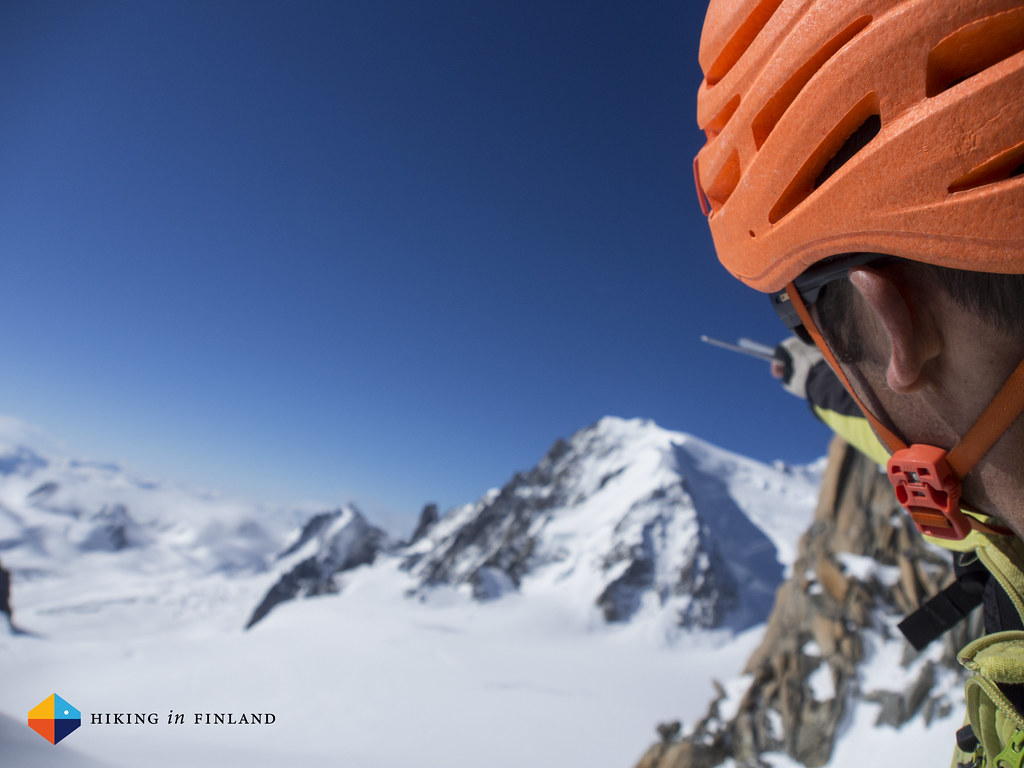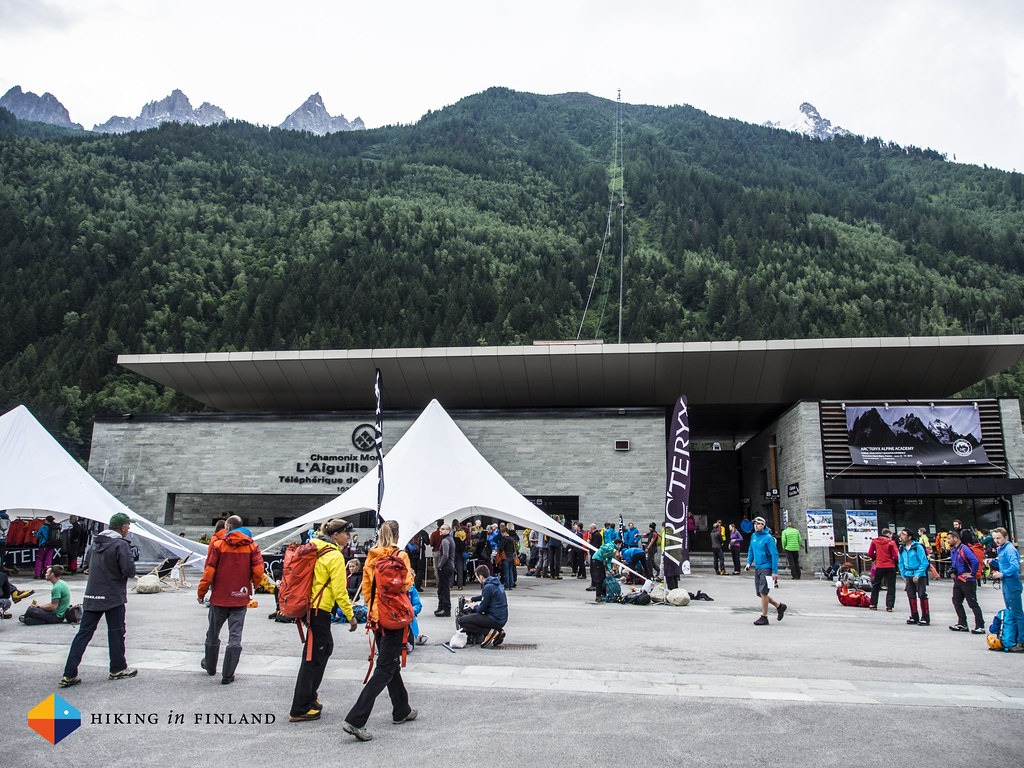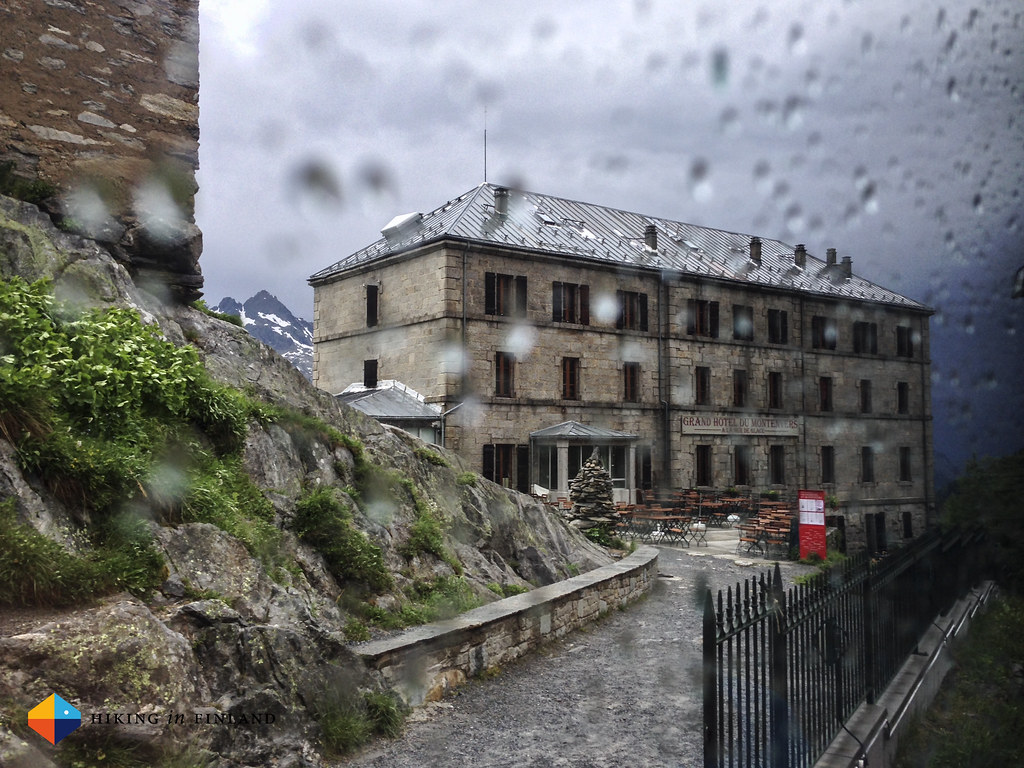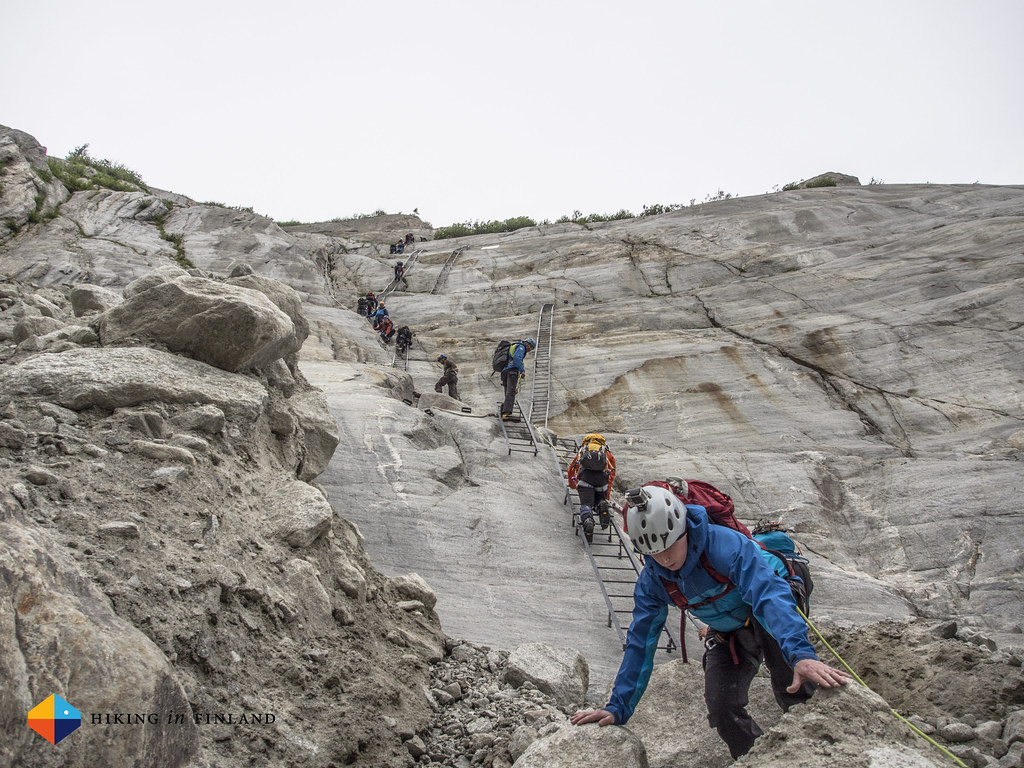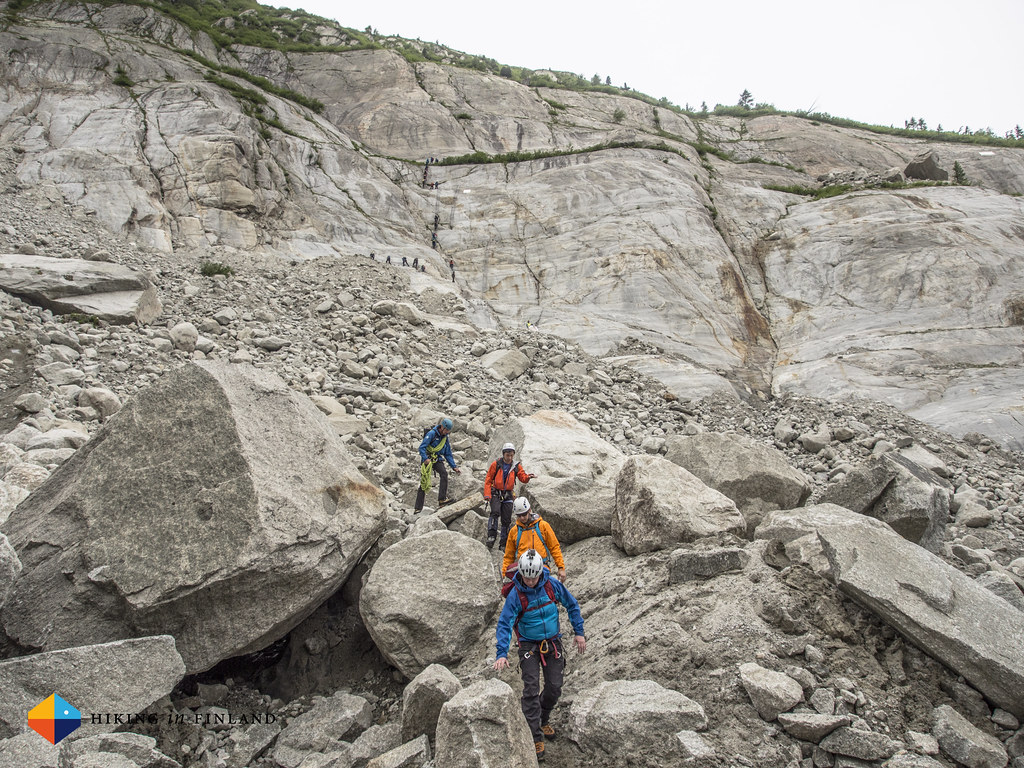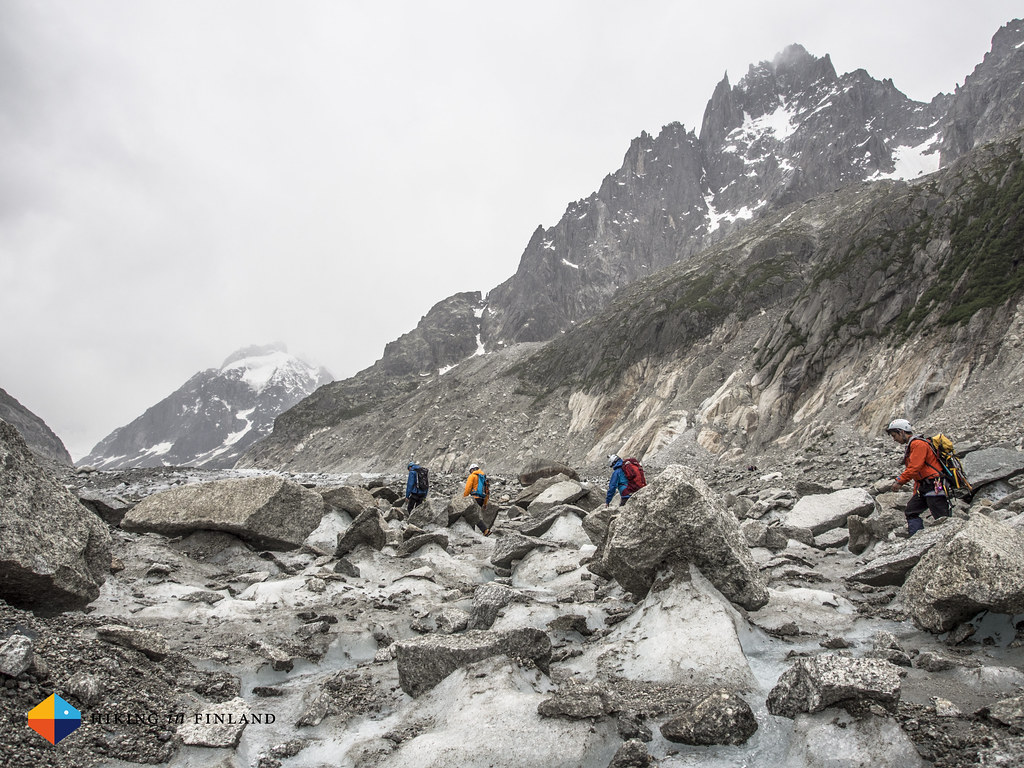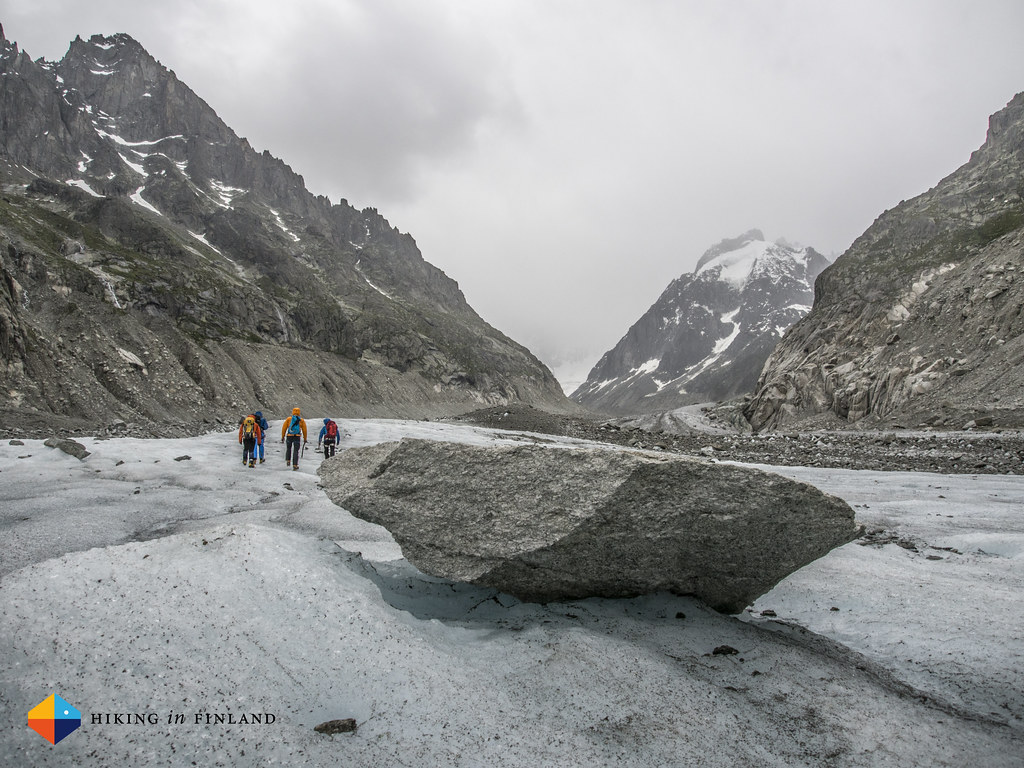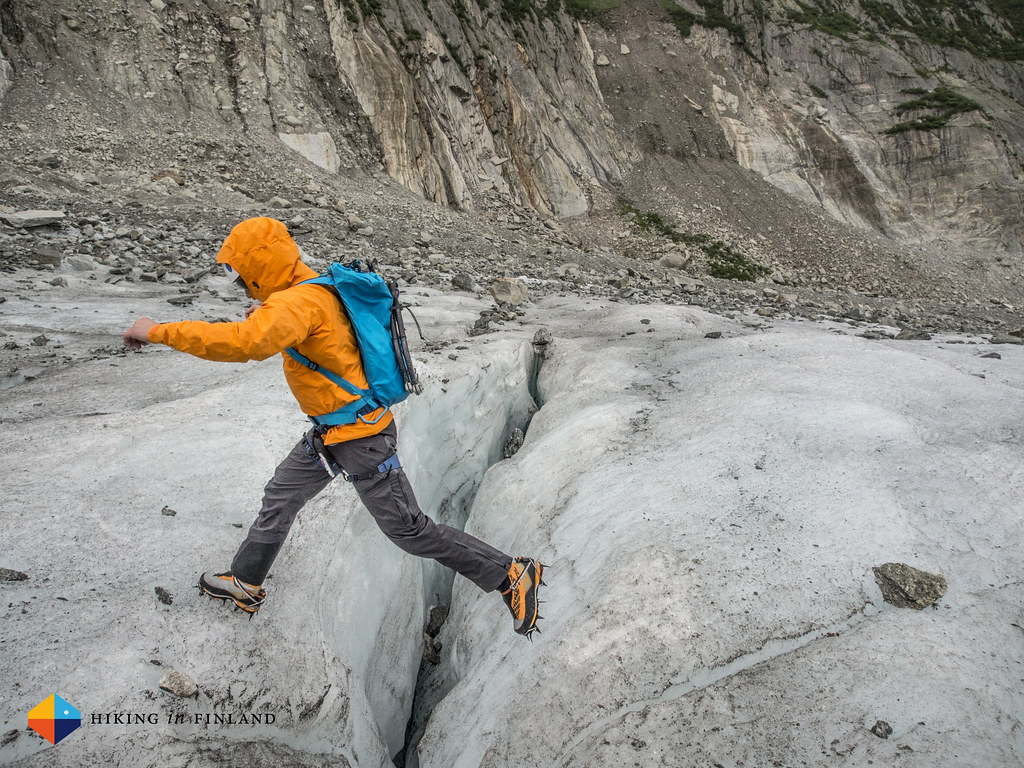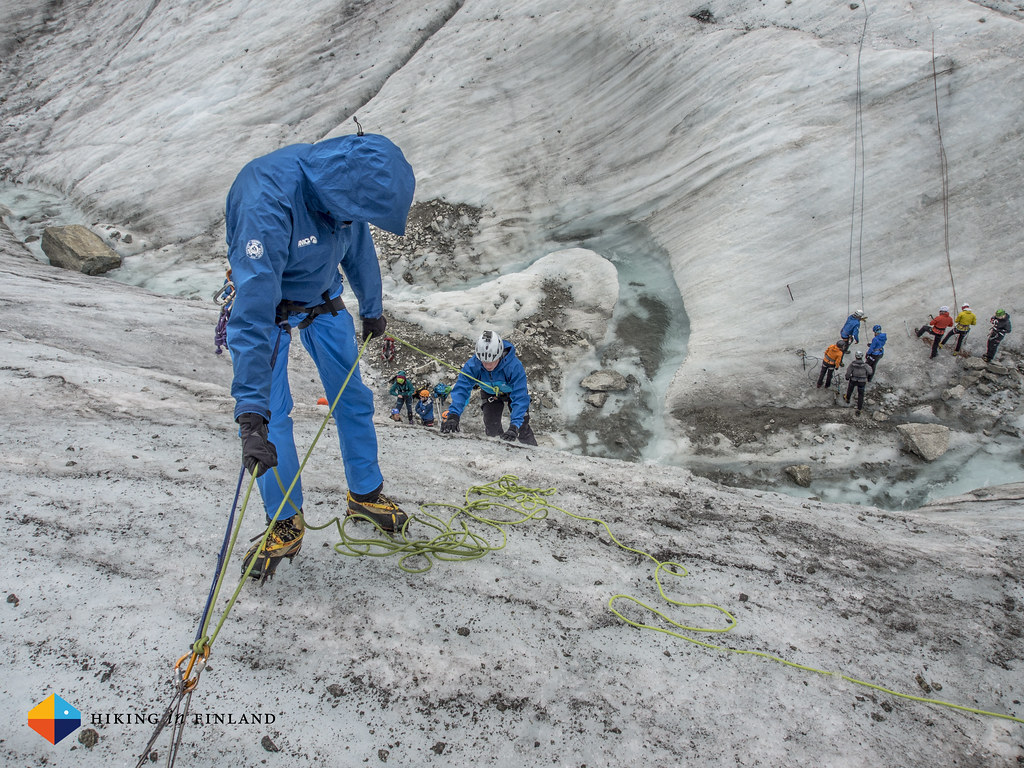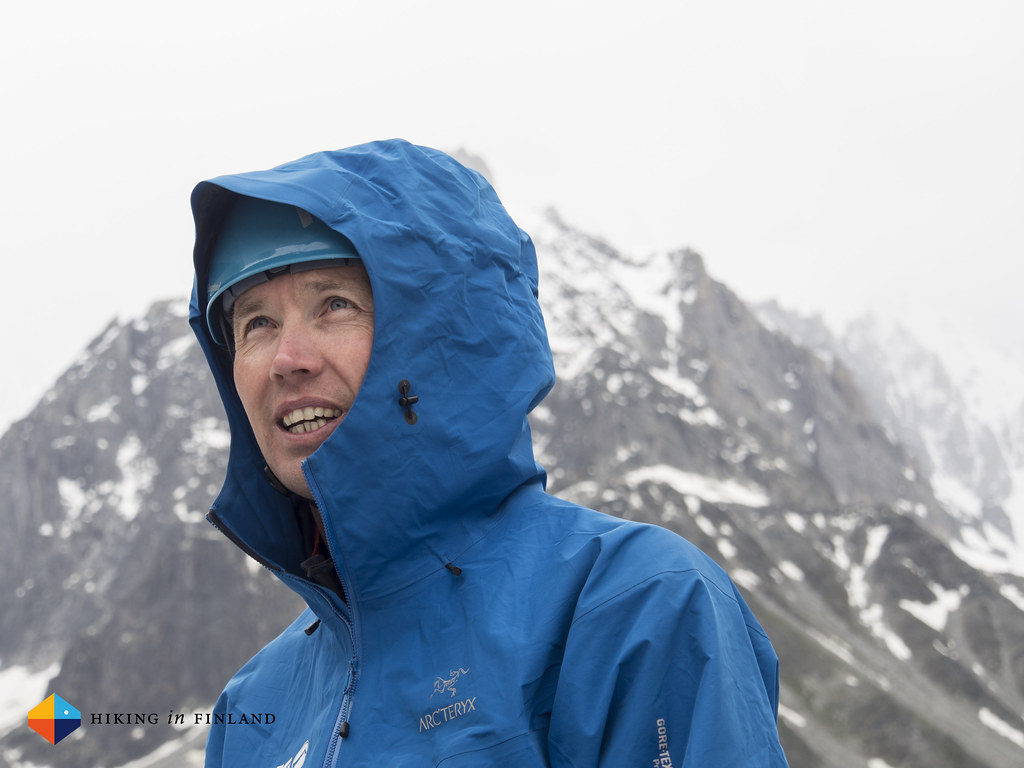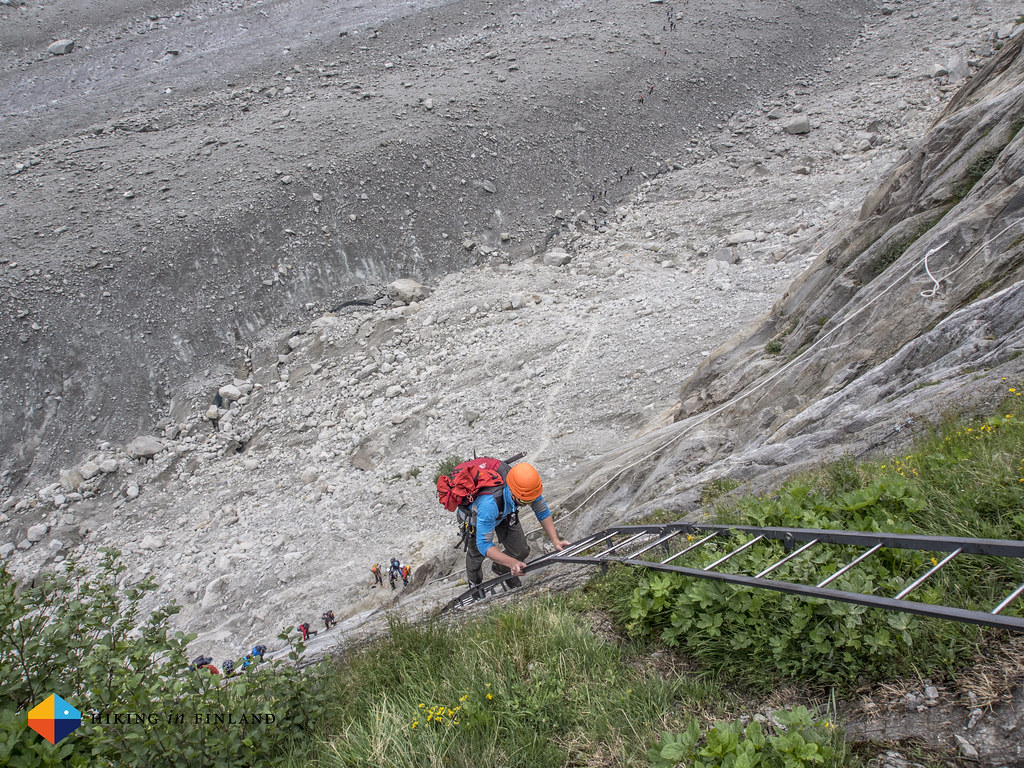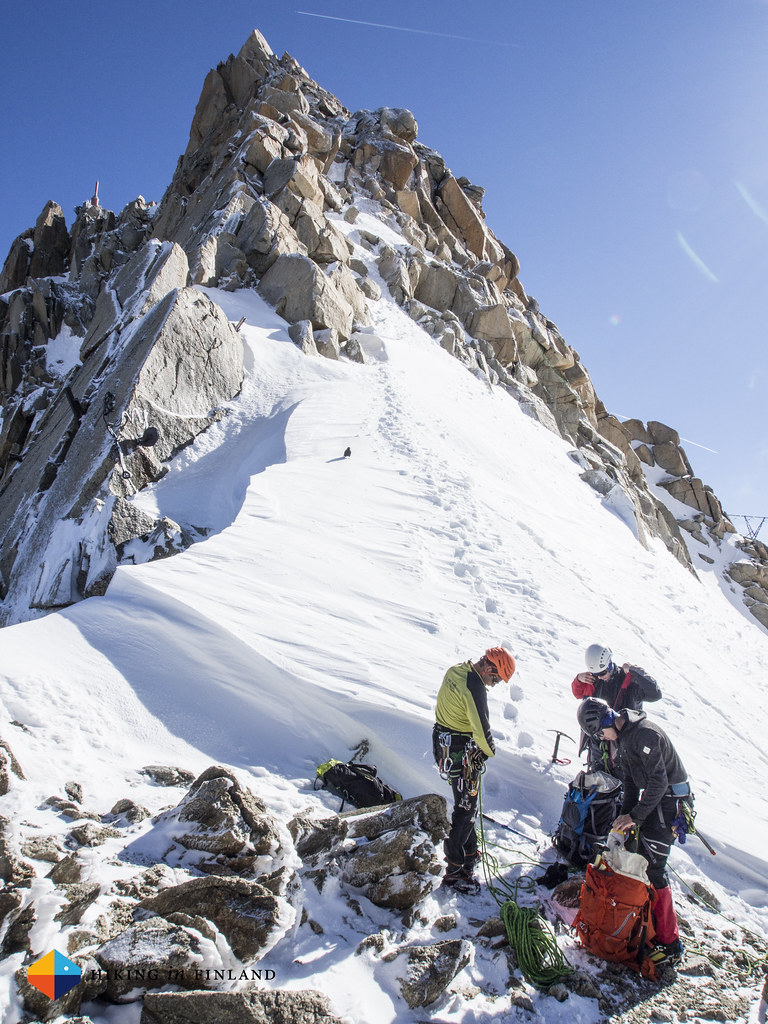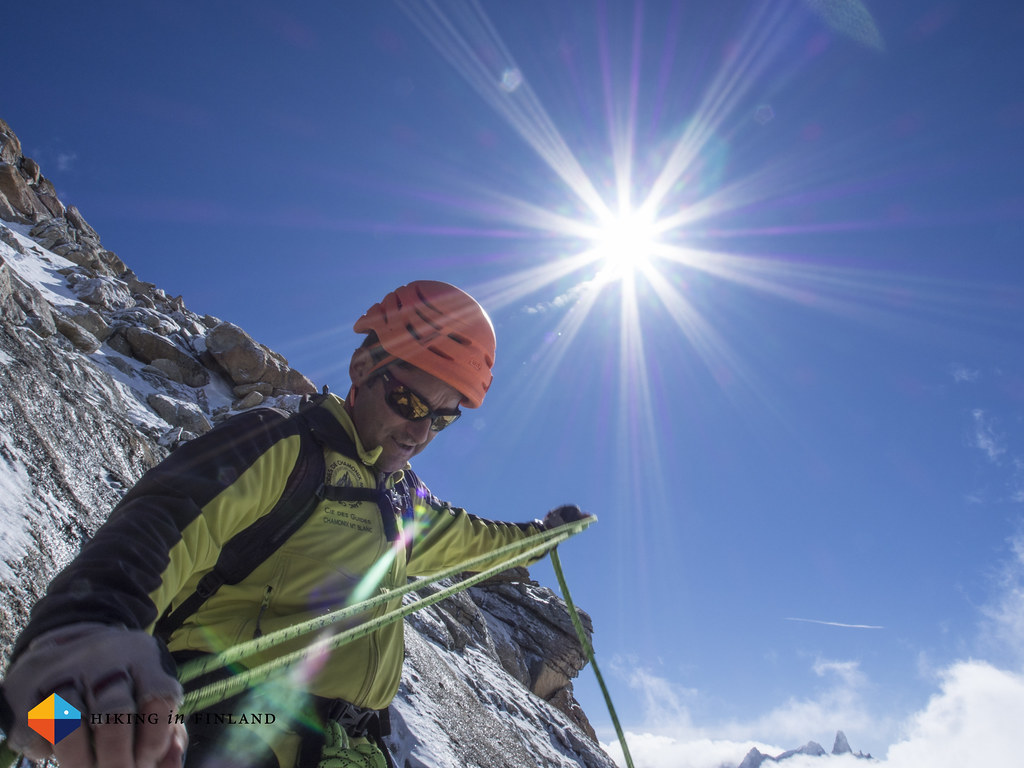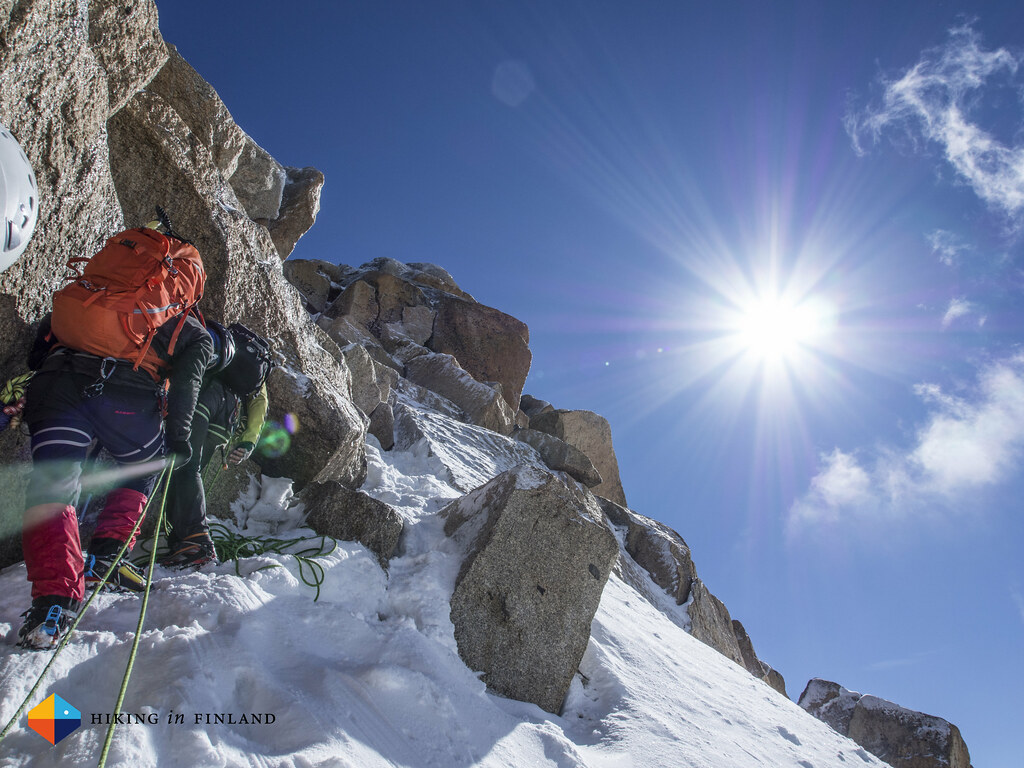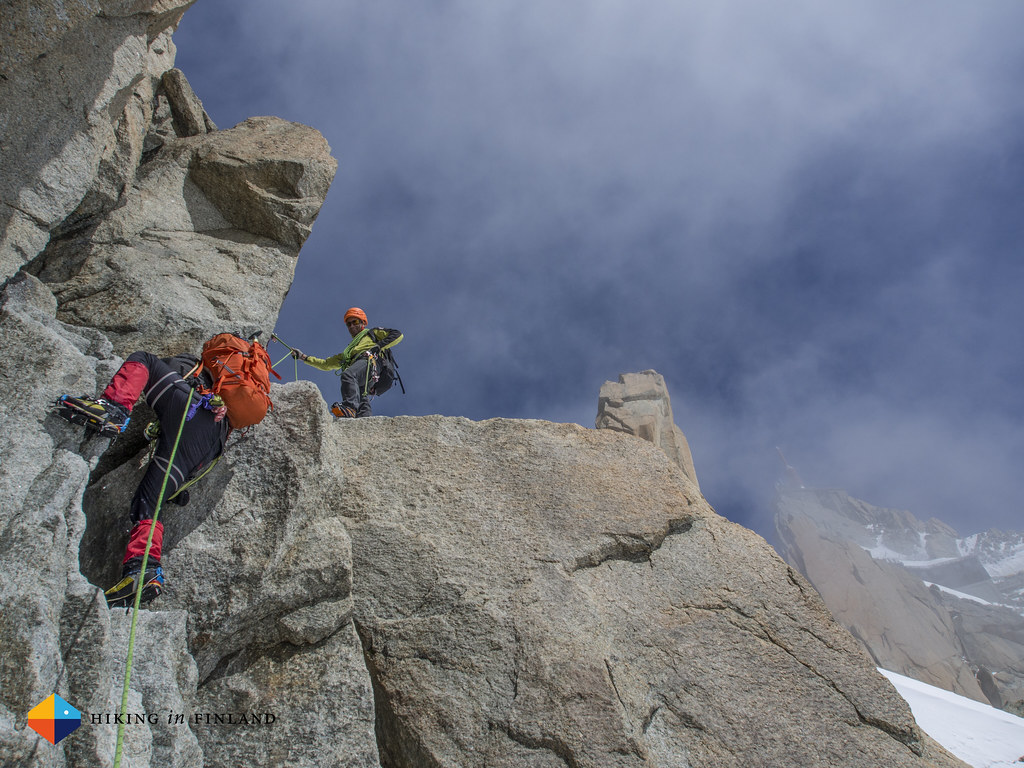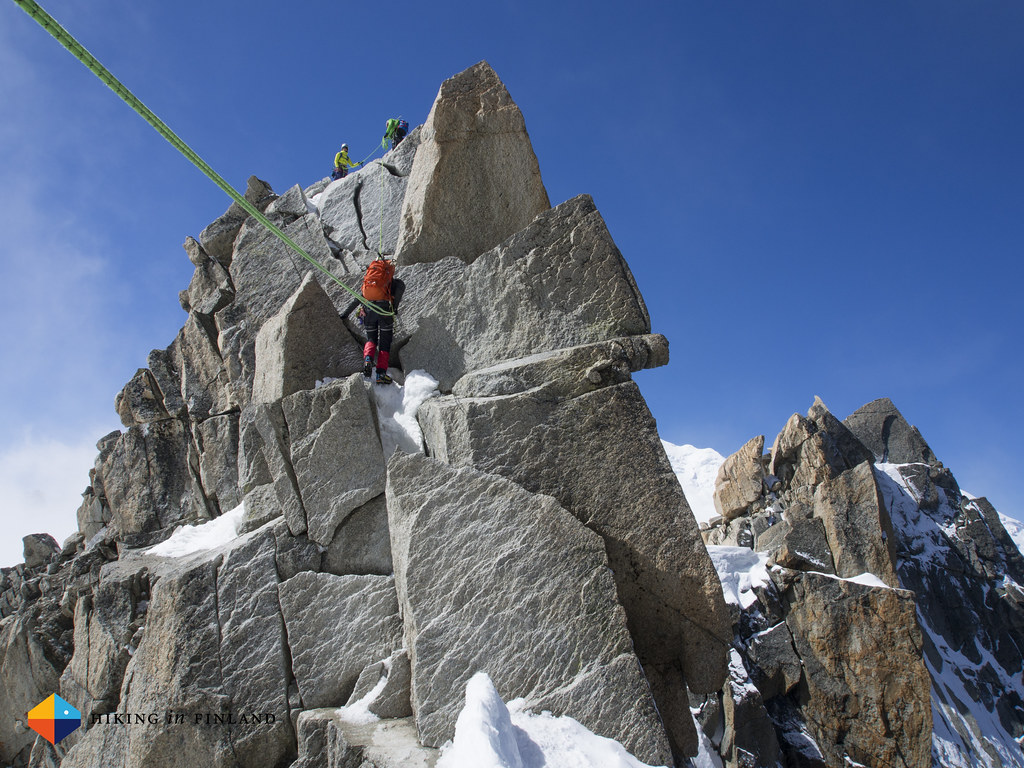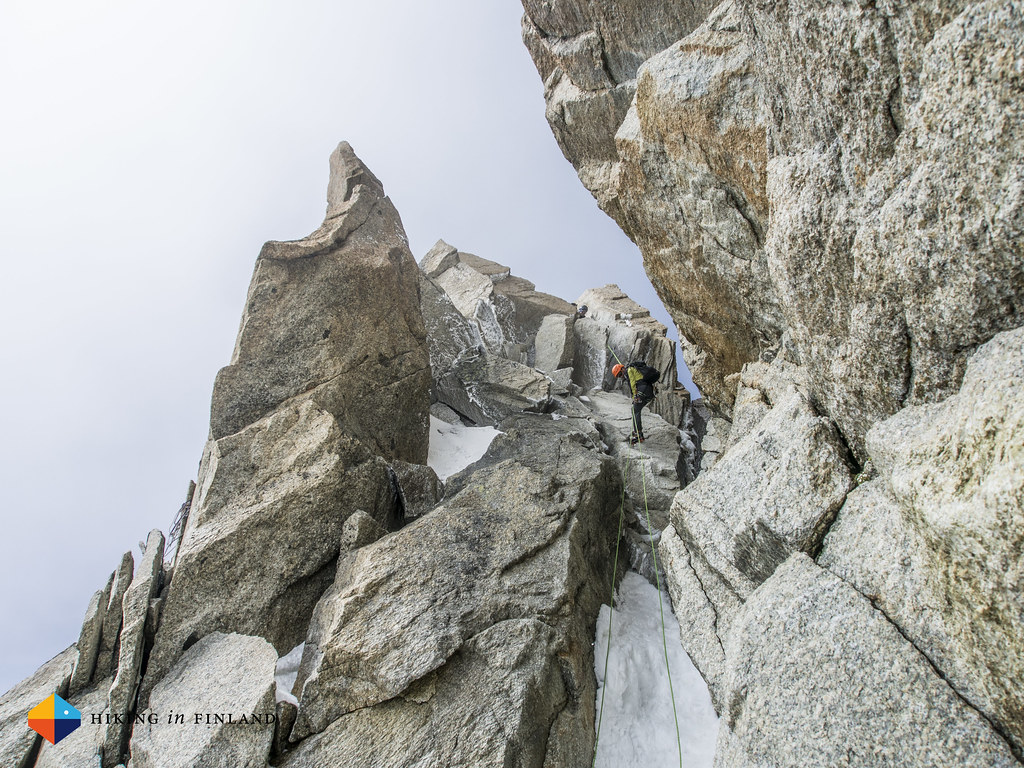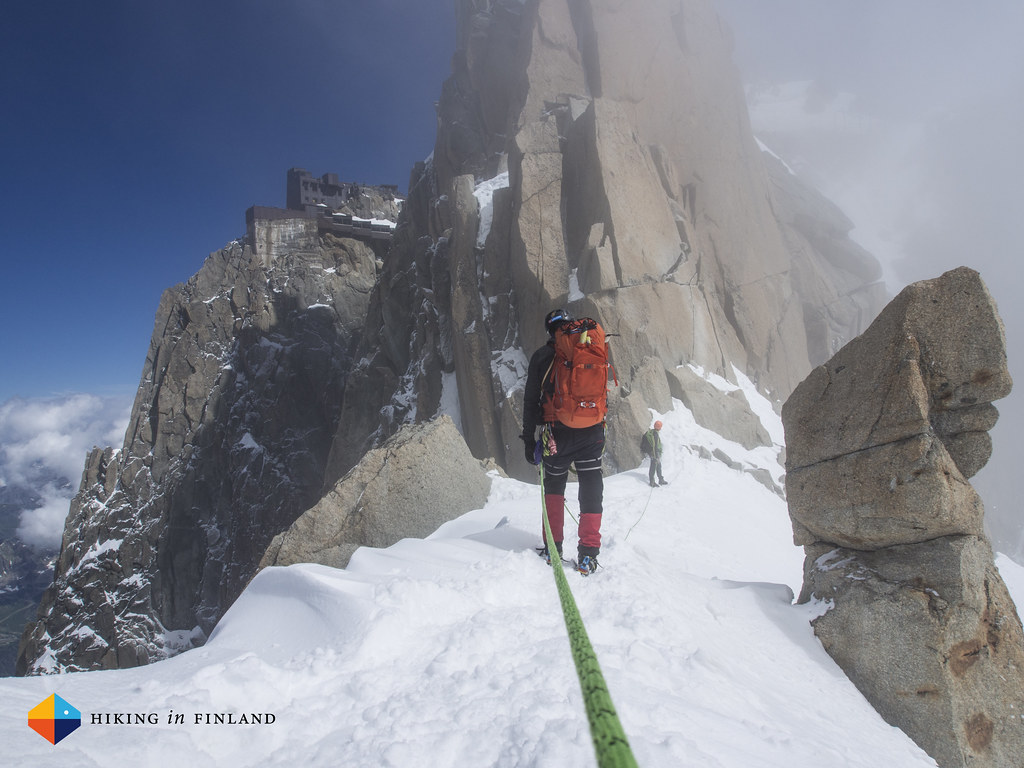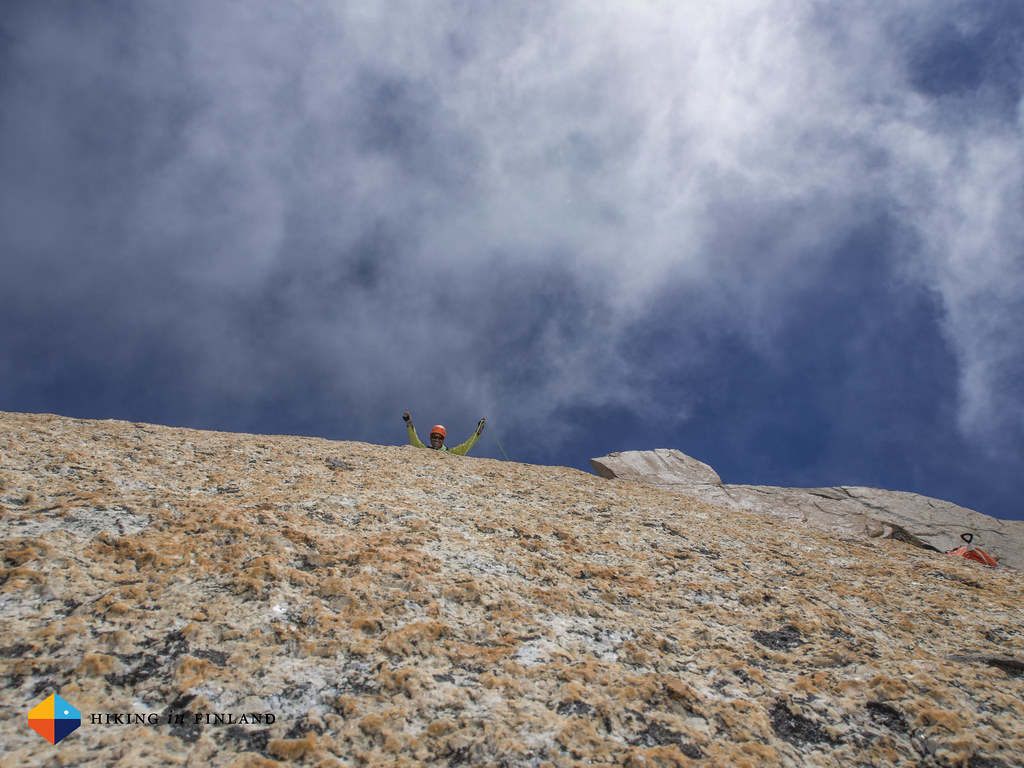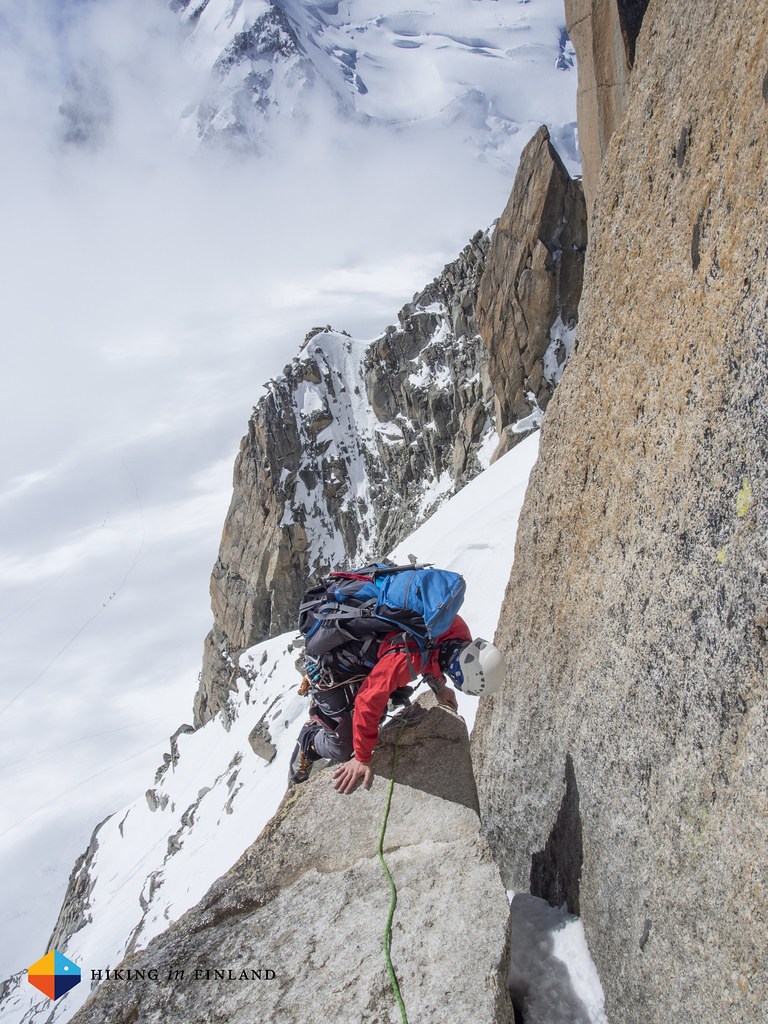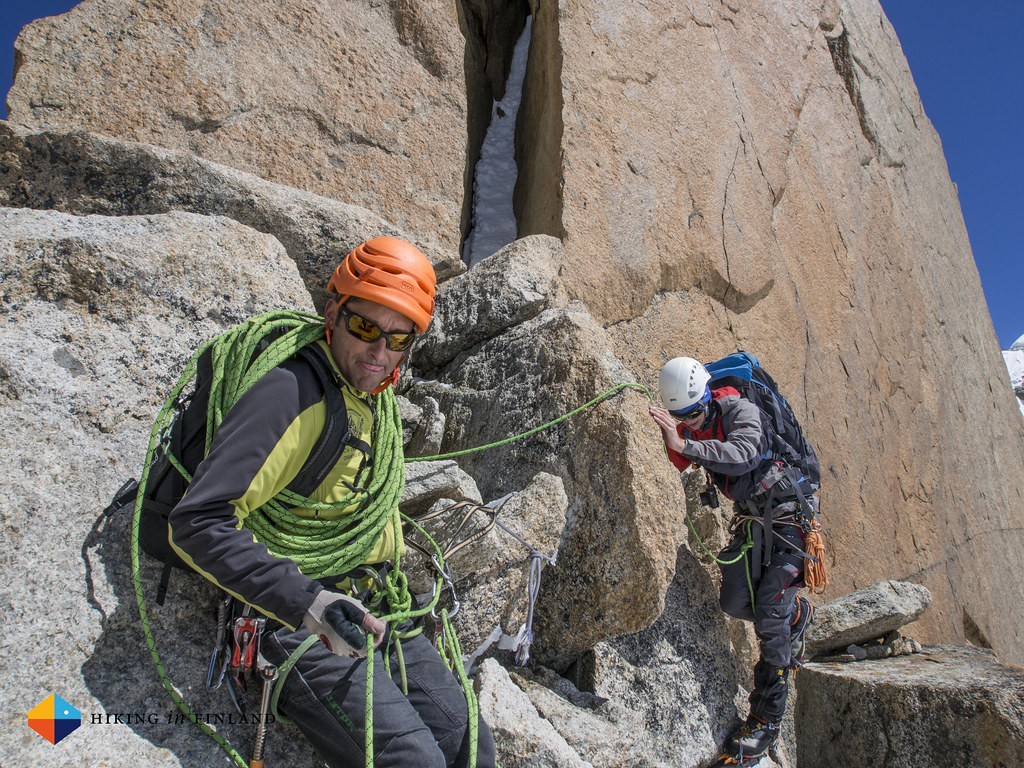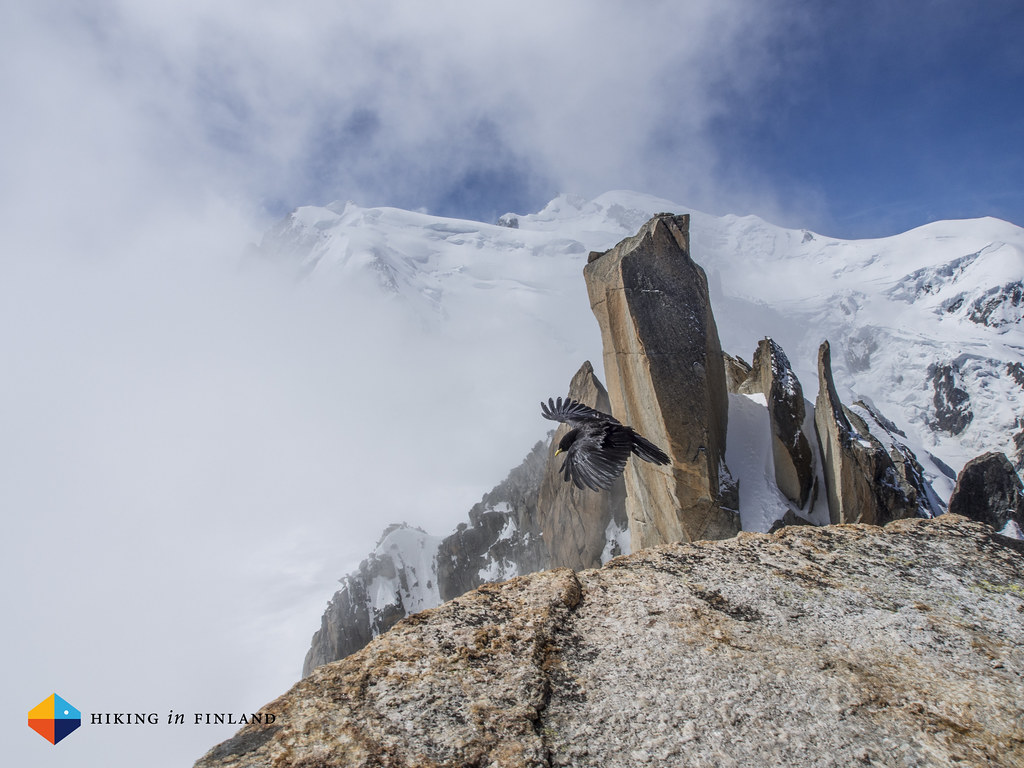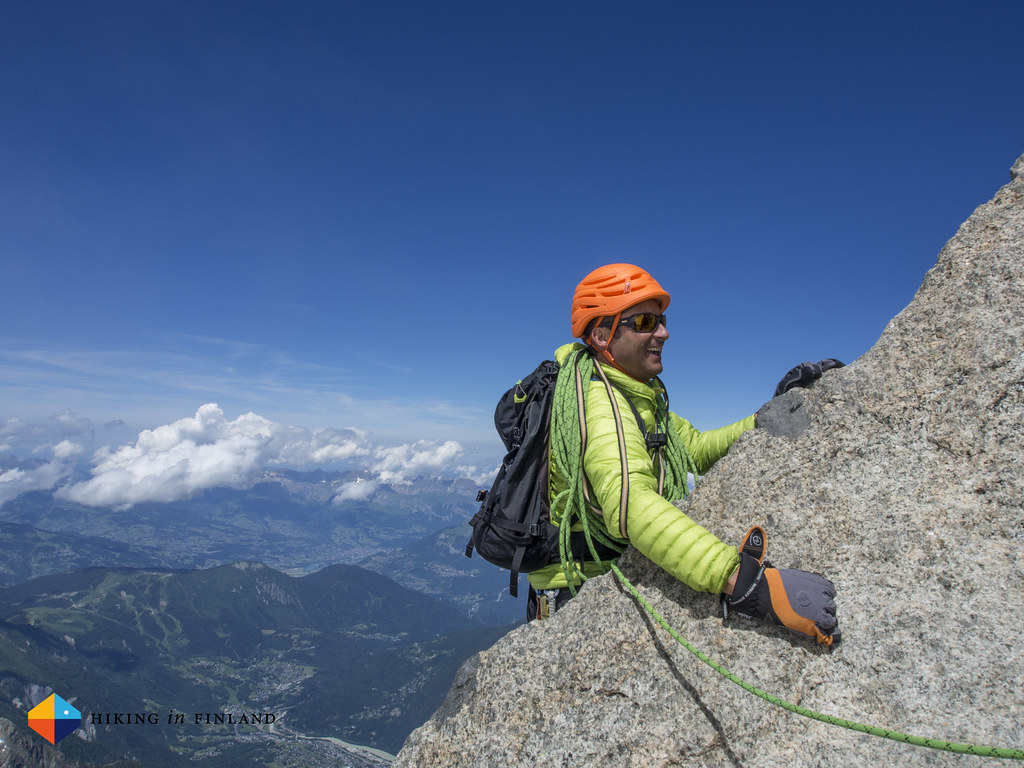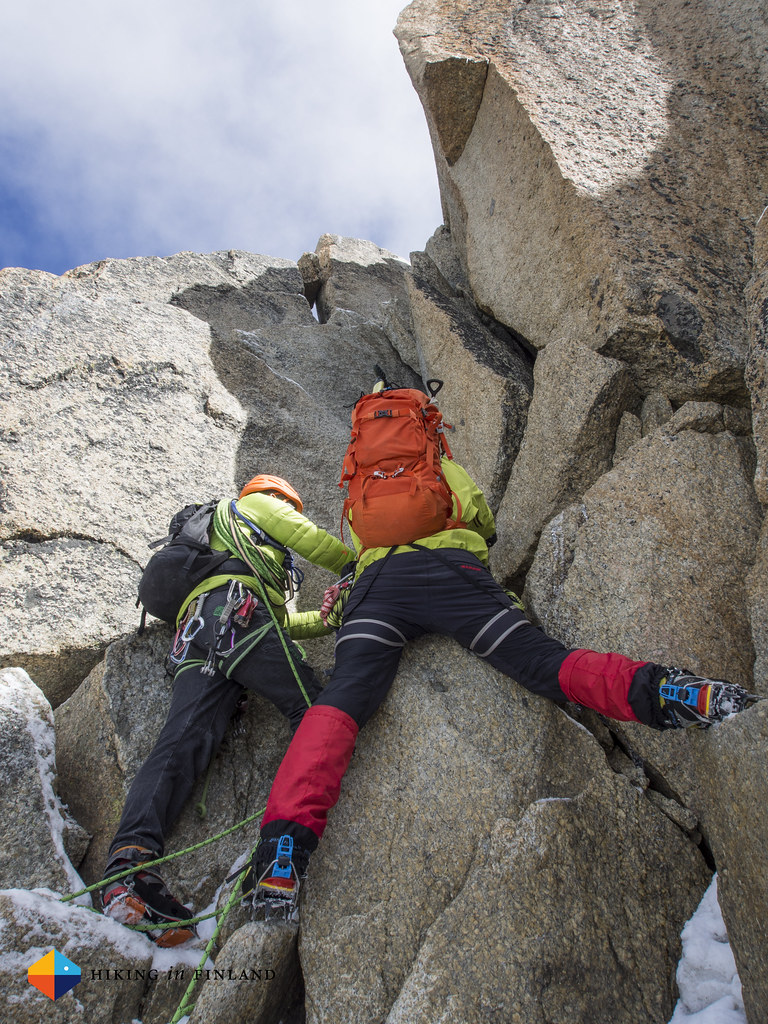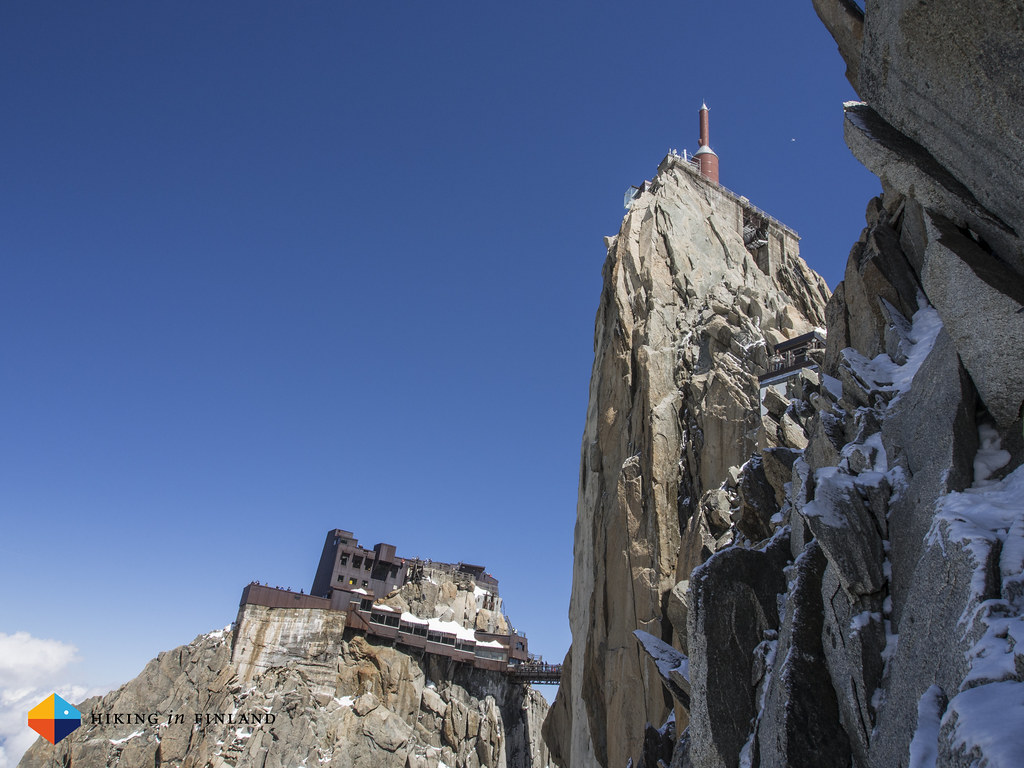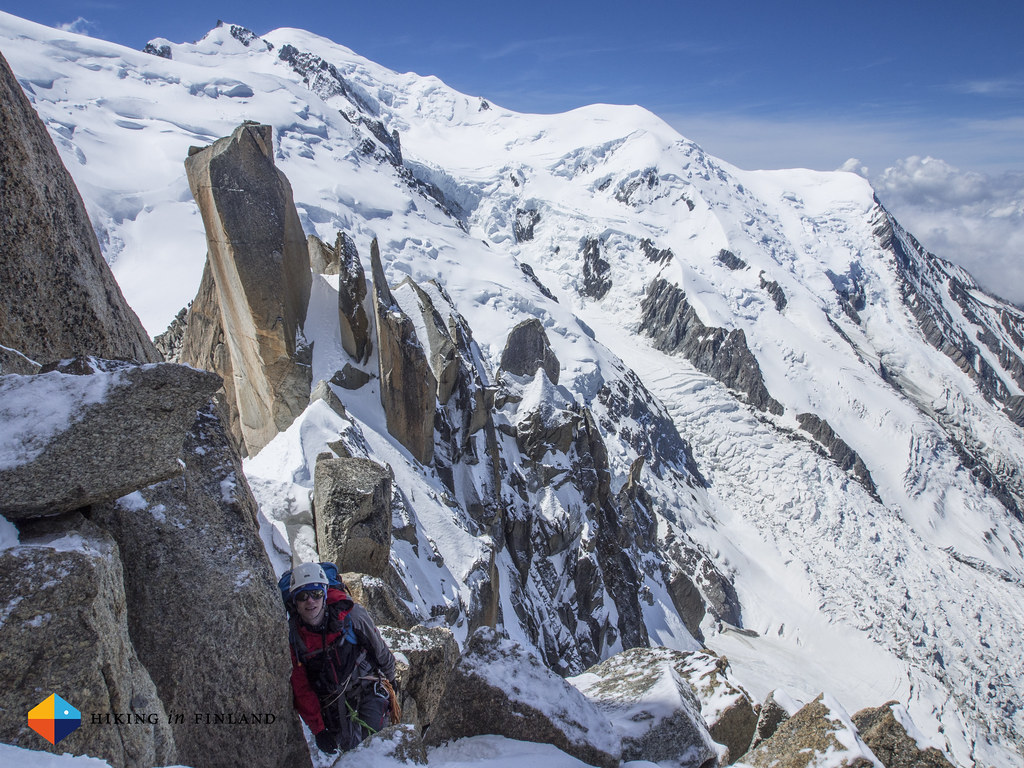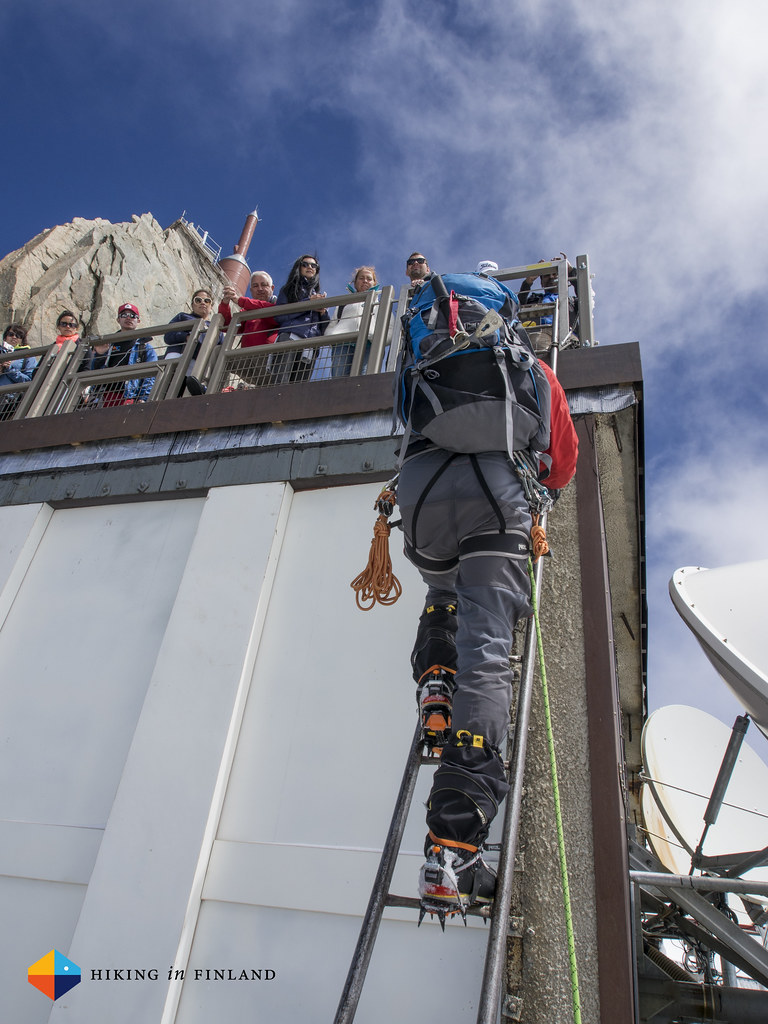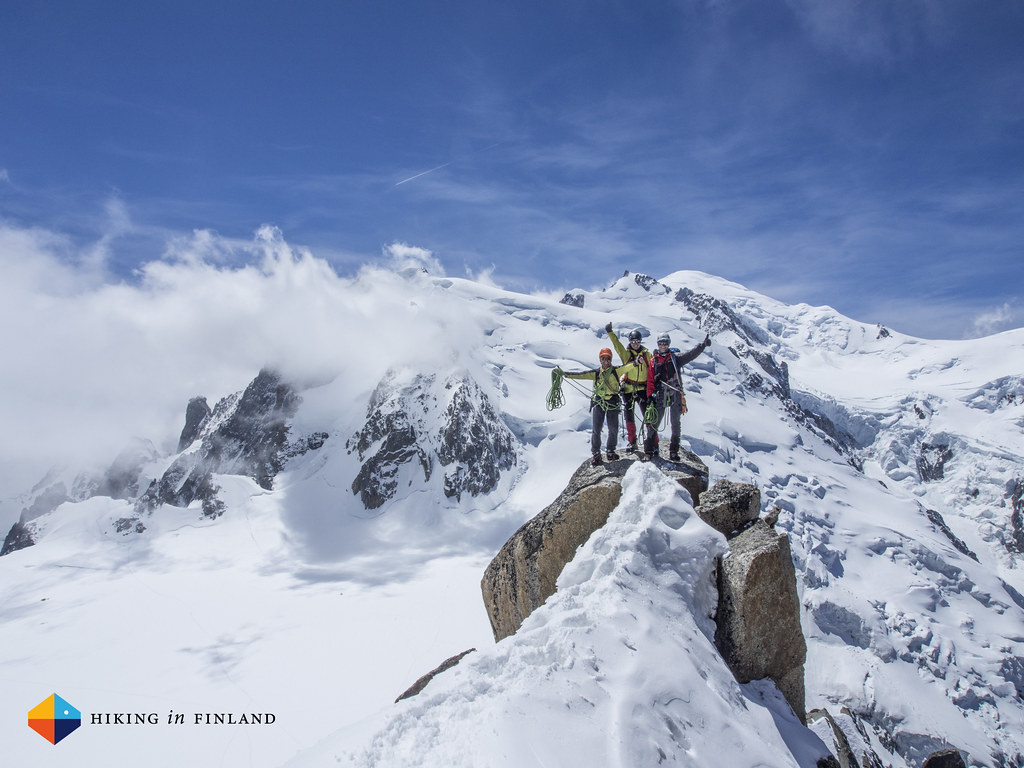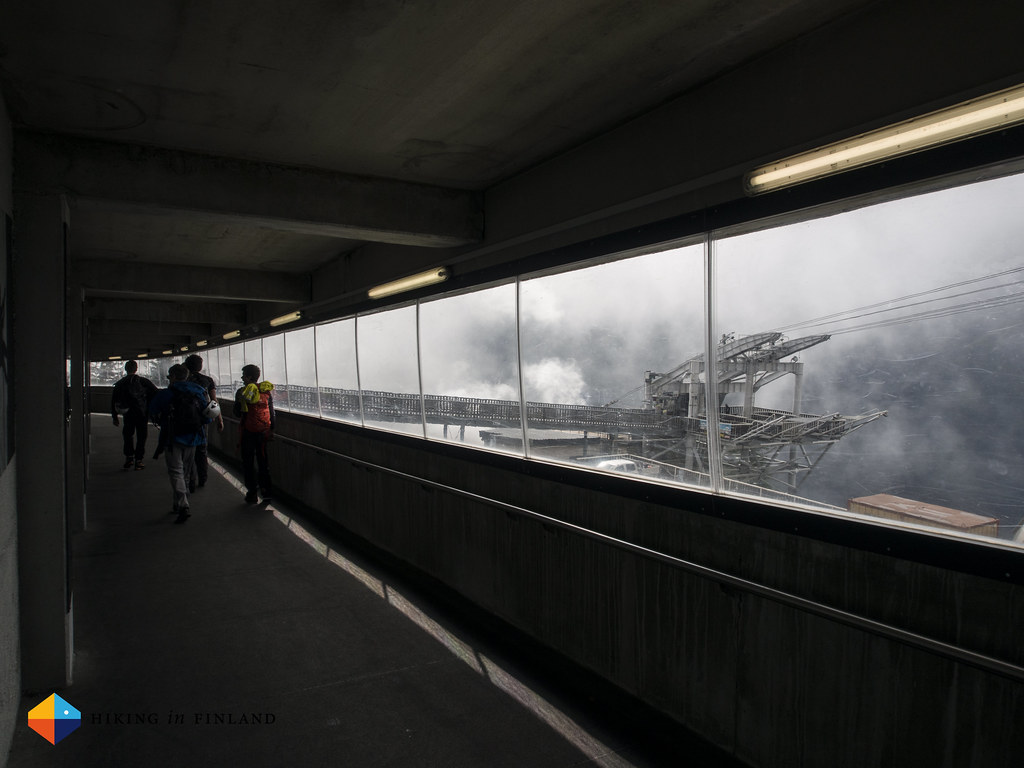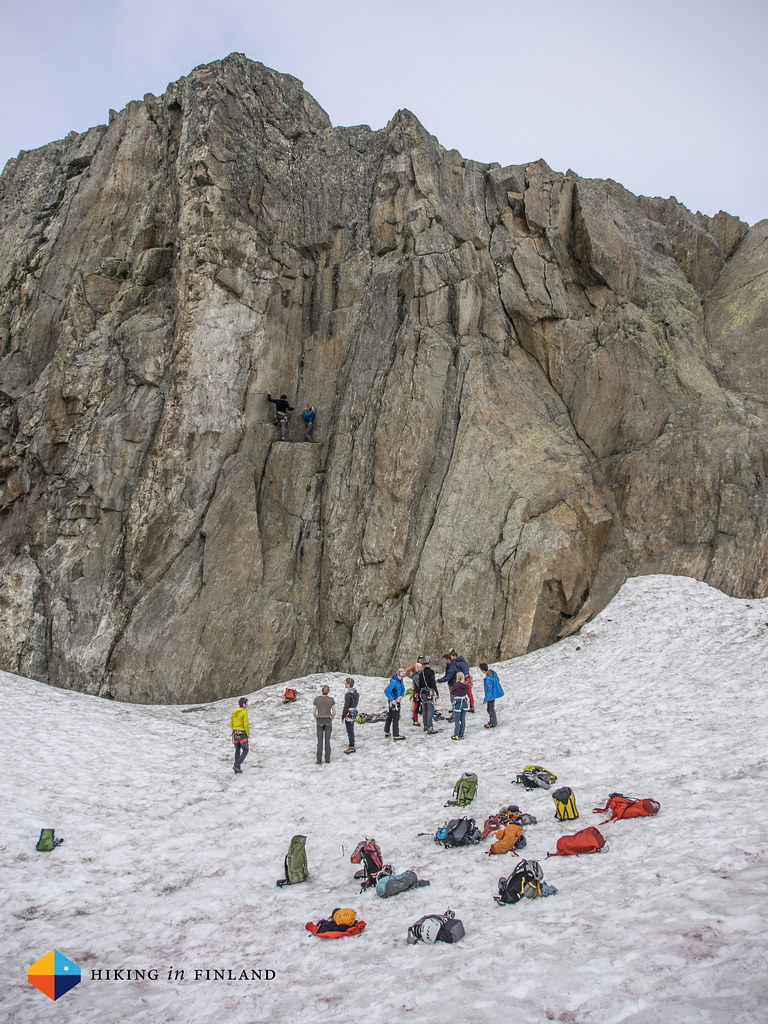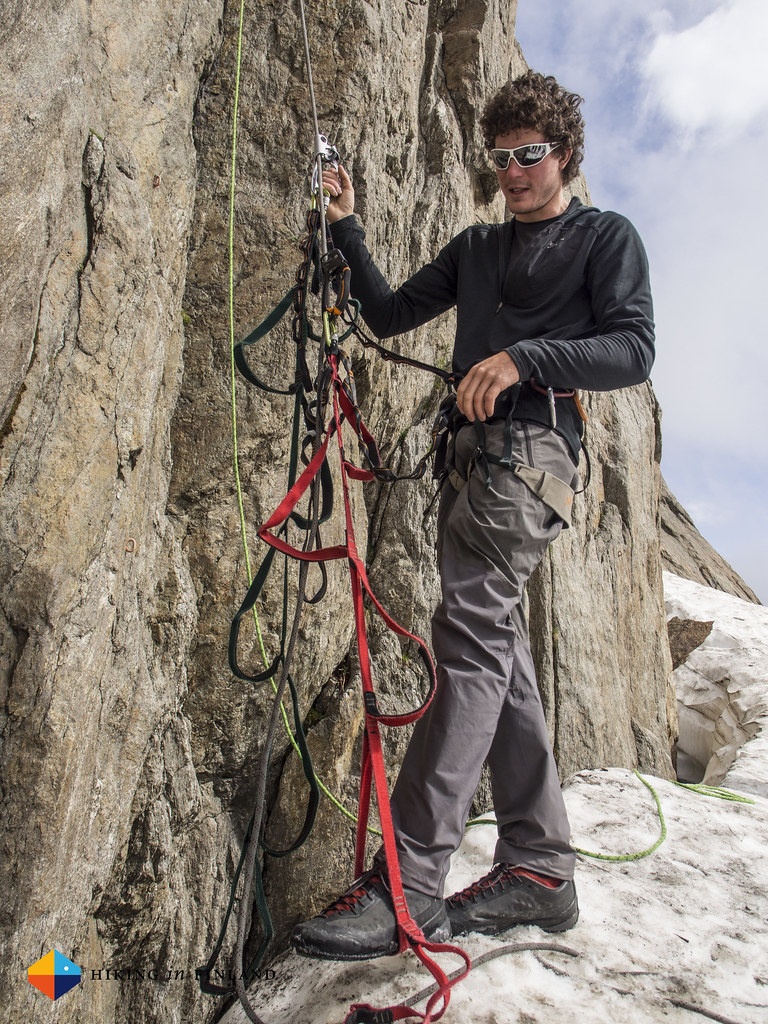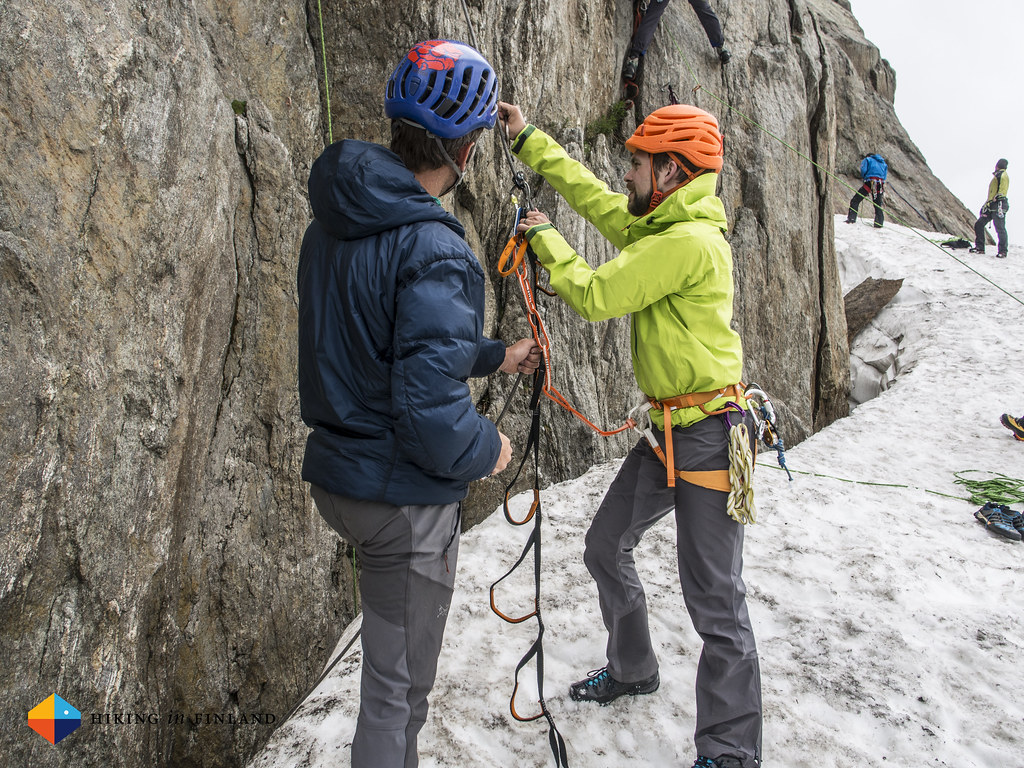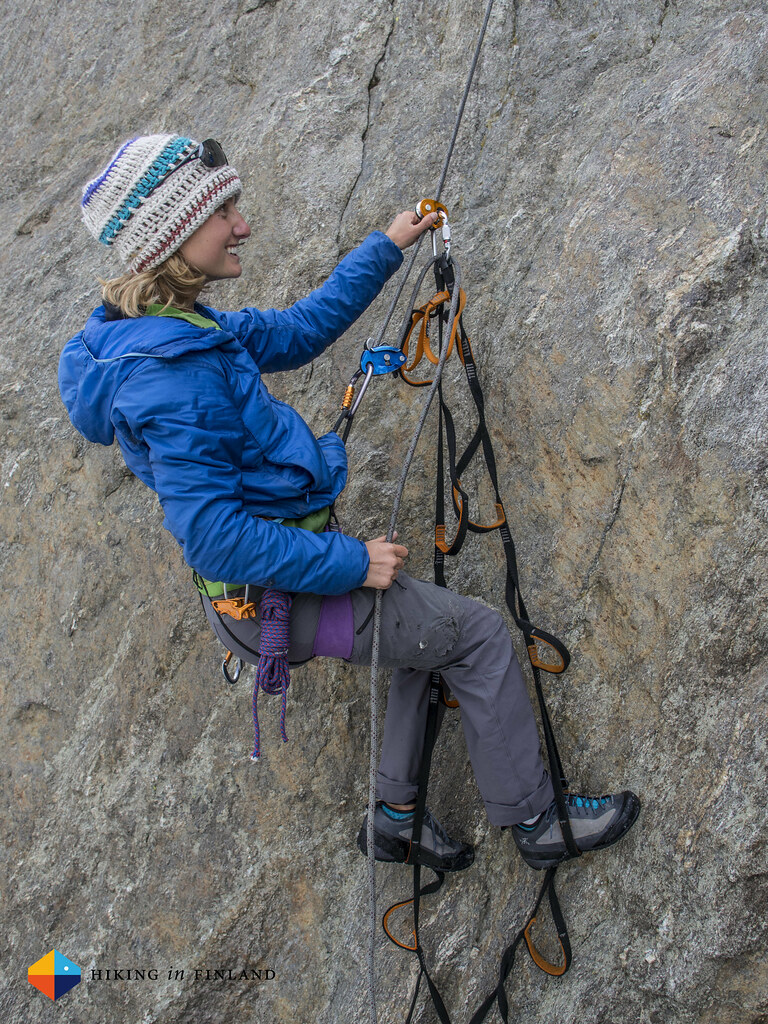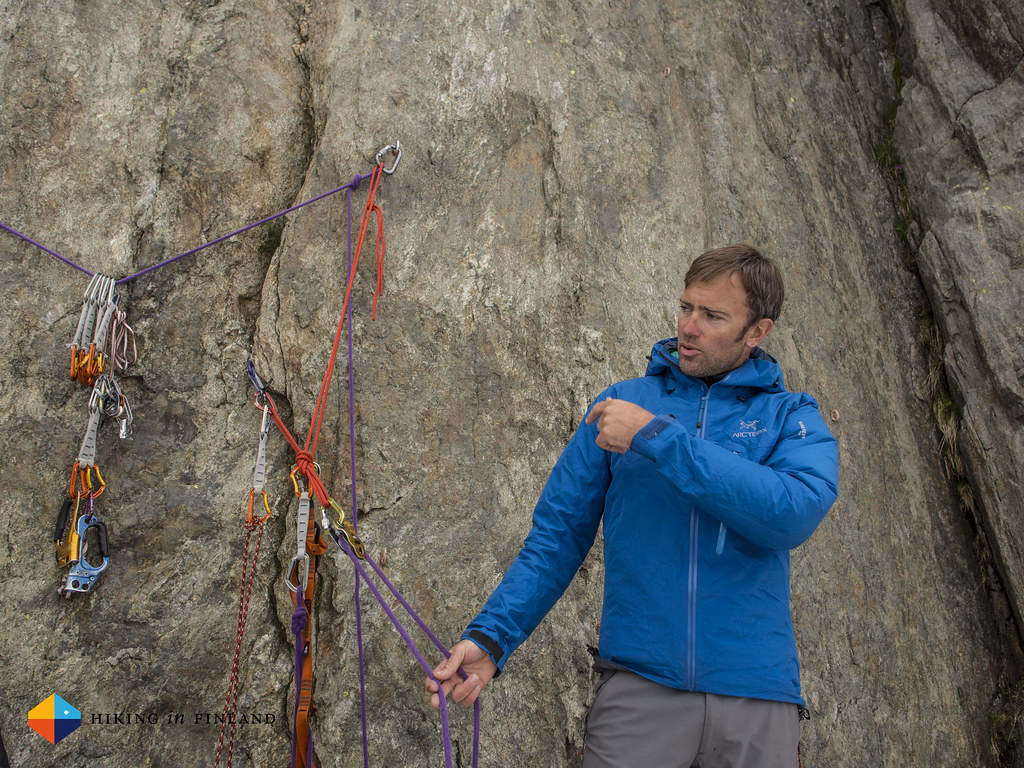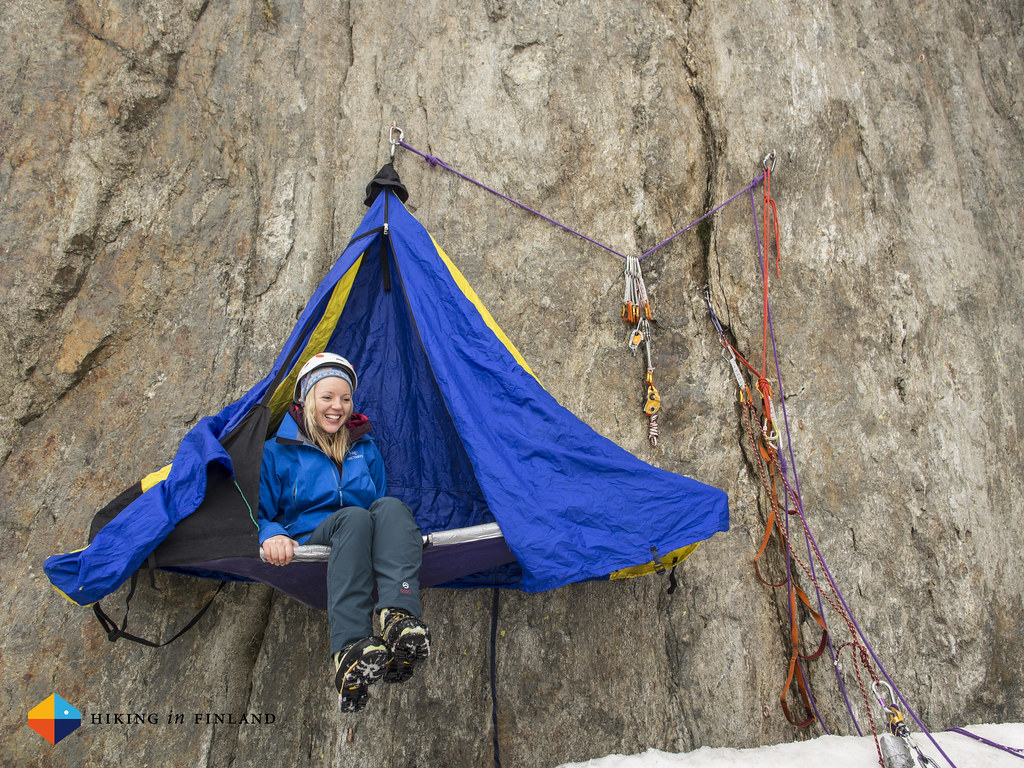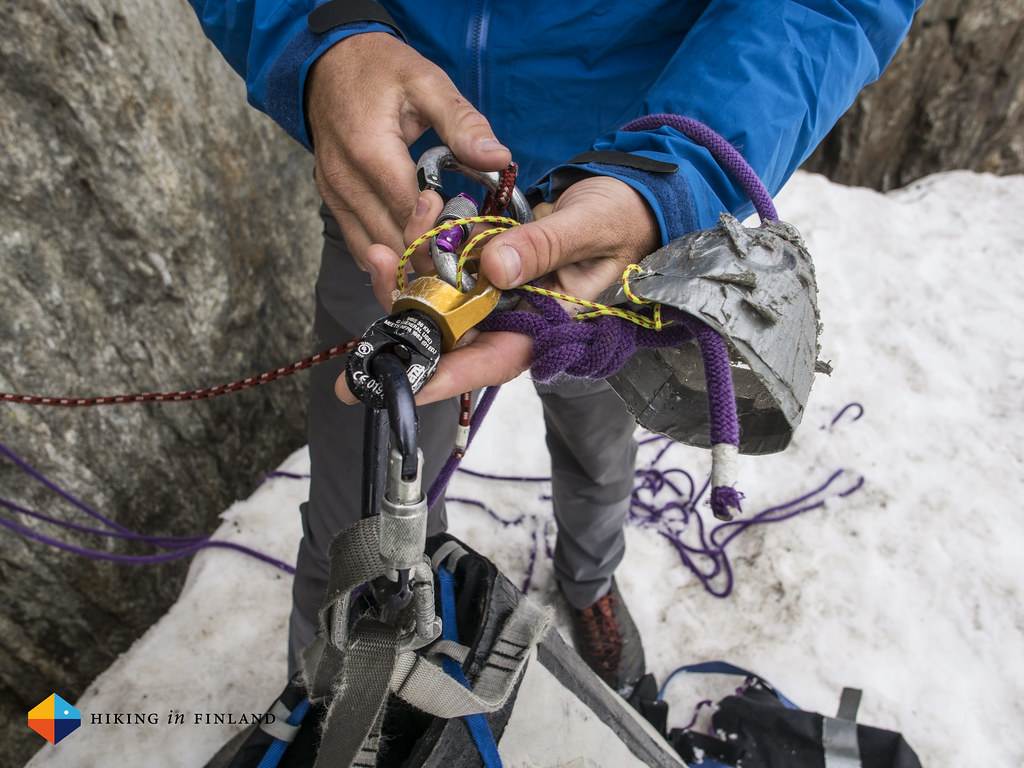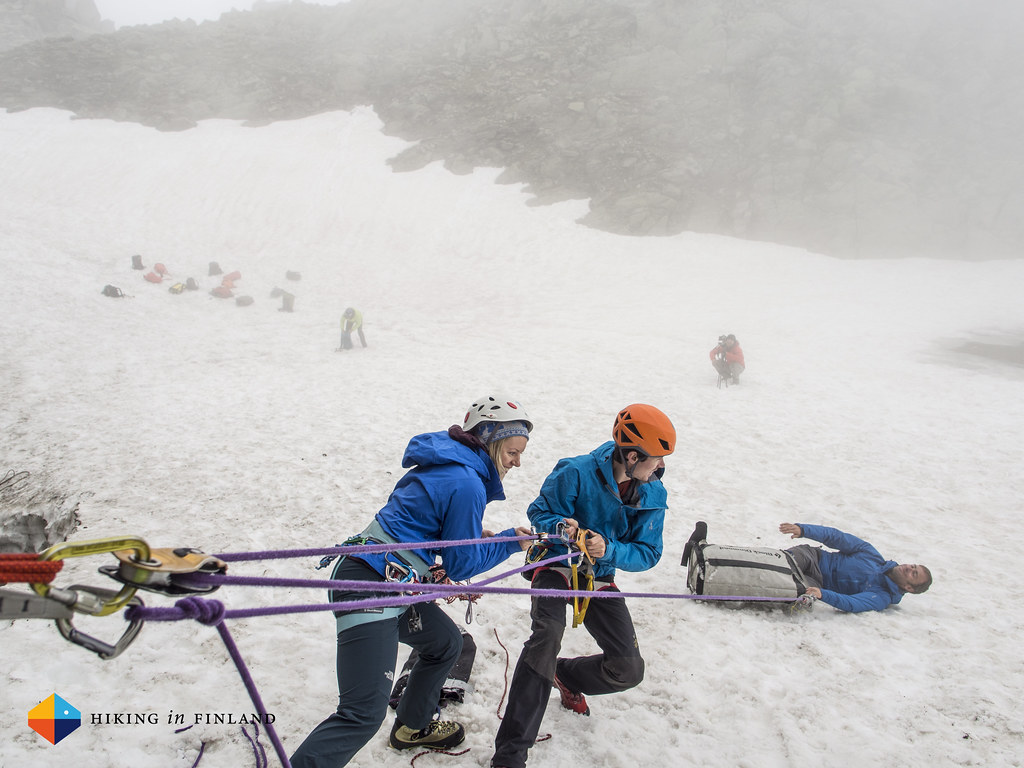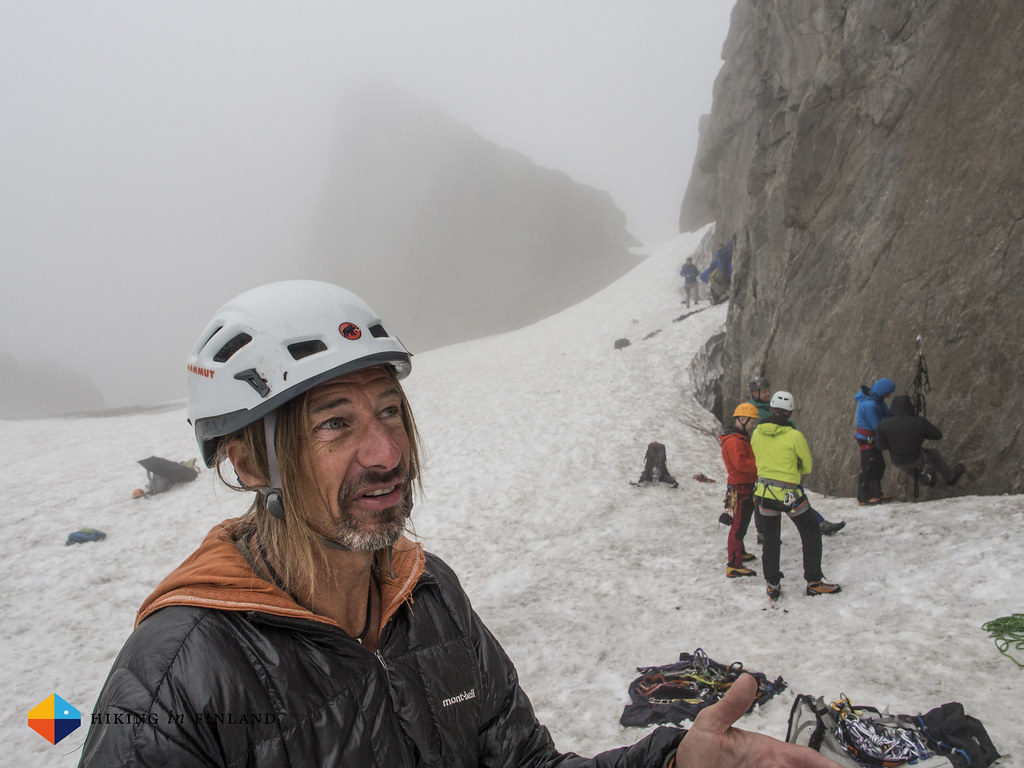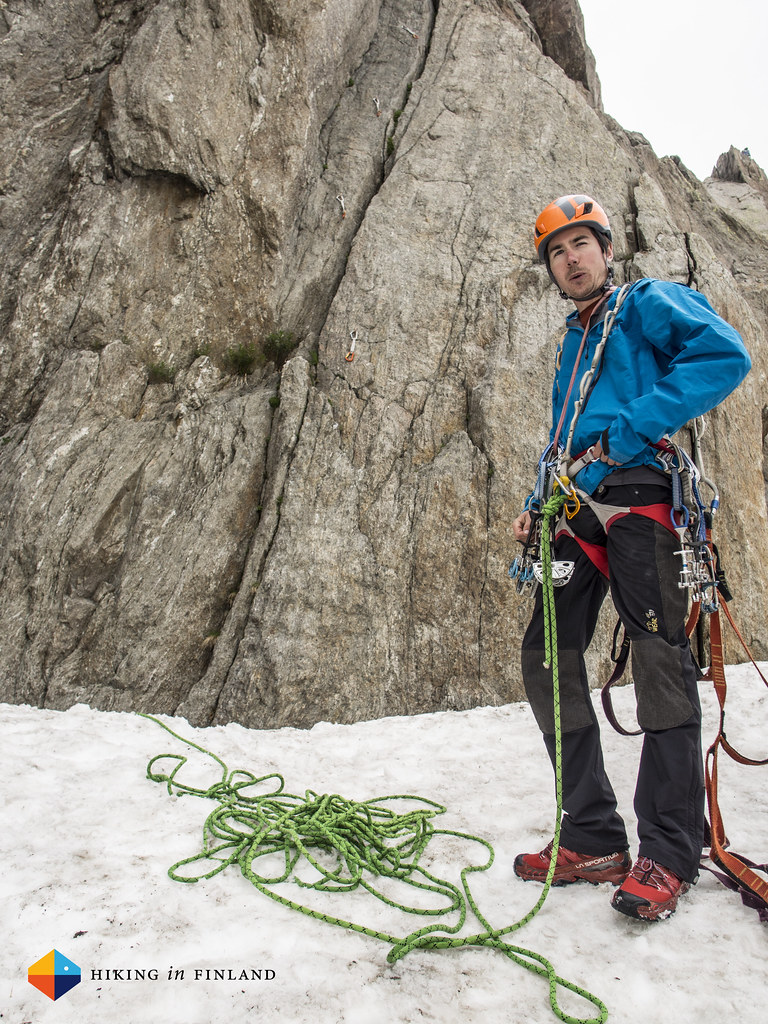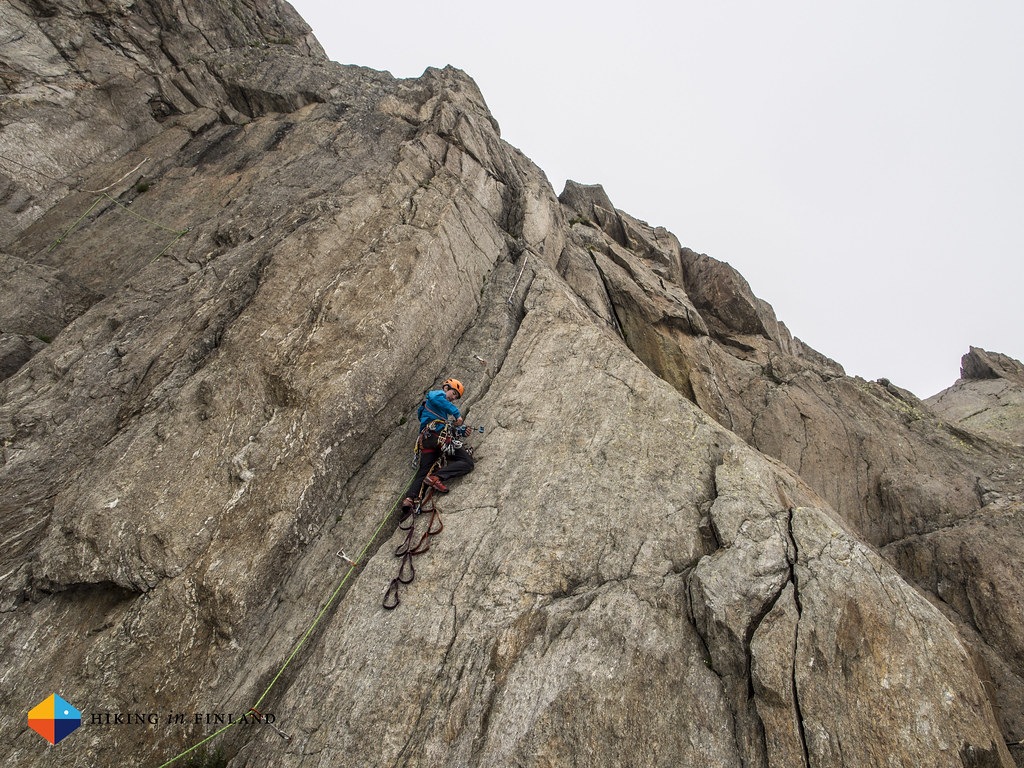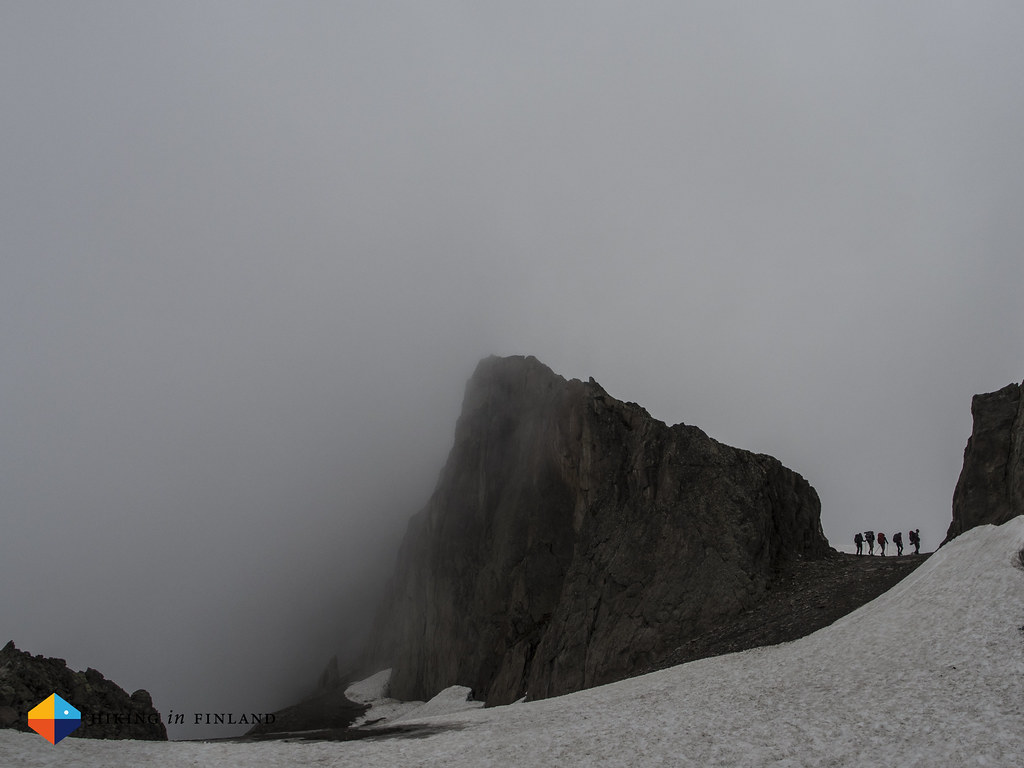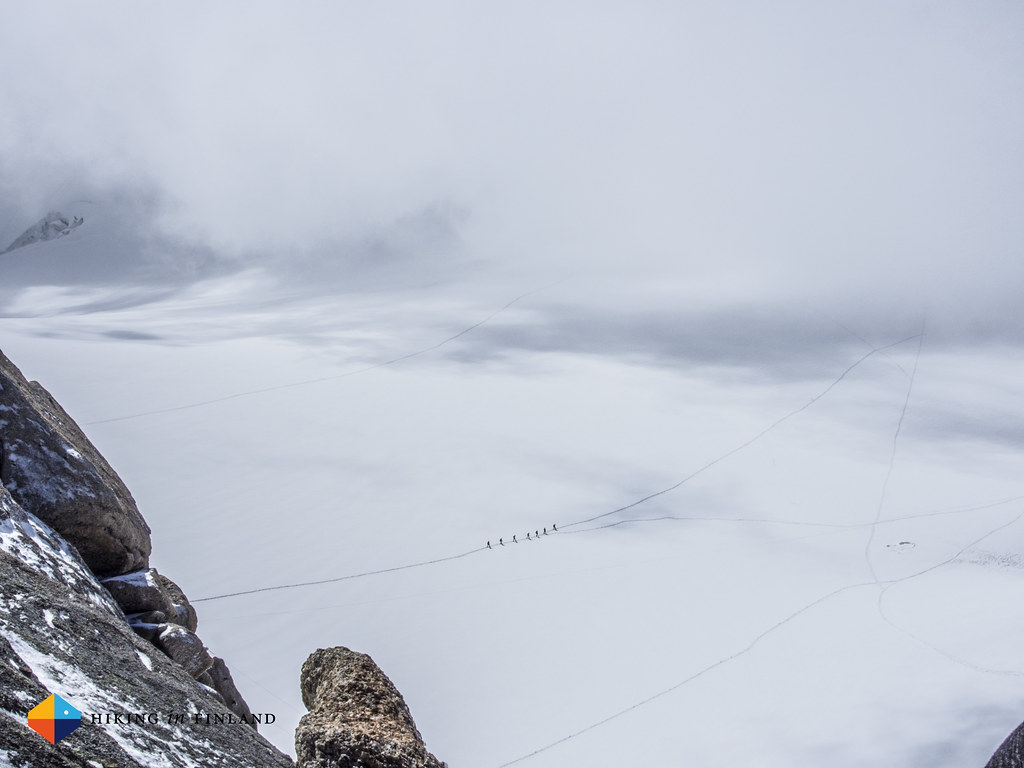A reflection on the fourth Arc’teryx Alpine Academy in Chamonix.
2015 was the 4th Arc’teryx Alpine Academy overall and my second one to attend. I was lucky enough to be invited as a member of the Press this year so got a sneak peak at the cool new gear that will come next year from Arc’teryx, and like everyone got the chance to hang out with the athletes, try out cool gear from Arc’teryx, Petzl, Scarpa, MSR and LYO Food and have a great time in Chamonix with the other participants. Here’s a re-cap of the three clinics I visited, which should be interesting if you’re considering to visit the Arc’teryx Academy in 2016!
Glacier Preparation Clinic
I haven’t been to Mer de Glace last year so decided that the Glacier Preparation Clinic would be a good start for the weekend in Chamonix. The Mer de Glace is also only at about 1.900 m height which makes for easier acclimatisation, which worked well for me - last year I went straight up to 3.800 m, and living at sea level that’s quite a bit of difference.
Our group of four were with BMG and IFMGA Mountain Guide Stuart MacDonald which was a great guy which explained us everything we needed to know about walking on a Glacier. After taking the train up to the Grand Hotel Du Montevers we walked to the ladders and started the descent down to the Glacier. It’s an interesting thing, as less than 150 years ago you could walk onto the Glacier from where you embark the train - climate change is showing its ugly face here, and it will be interesting to see how much more the glacier will retreat.
Once you’re down the ladders you walk over the moraine till you’re at the proper glacier. Here Stuart explained us how to put on our crampons and how to walk normally in them, which we did for a bit. Then we moved on to learn more crampon techniques, front pointing, and how to use our ice axe. If you haven’t used these ever before its a good clinic to get to know the basics, so that you can do for example glacier hikes in the future.
After that we went to a steep section where a glacial river has carved a deep gorge into the ice, set up anchors and started to first walk steep ice up, and then ice climb it. The latter exercise was great fun, as we went from two ice tools to one ice tool to no ice tool, which taught you about proper foot placement and keeping your balance. This was the most fun part for me and I could have done it all afternoon long. Alas, we wanted to catch the 15 o’clock train down so after everyone made a lap down and up we started the walk back to the train station.
Advanced Alpine Techniques
The Arête des Cosmiques has been on my Tick List for a long time, and I was a bit jealous when my mate did it last year in his Technical Mountaineering course while we did the Pointes Lachenal Traverse. Waking up on Saturday morning after maybe one Génépi too much I was sure that today I’d be going on the Cosmiques, and lo and behold: As I arrived punctually at the Aiguille du Midi base station Jean Villard told me with a smile that the weather is so good that he thinks we should do the Cosmiques today, because we can learn & practice all the techniques on it that we should do in our Advanced Alpine Techniques clinic. We drove up in the first Gondola and met the two other clients who slept the night up on the glacier, roped up and started the approach to the Arête des Cosmiques.
At the Abri Simond hut we untied, roped up again and started up the route. It starts off with easy snow & ice covered slabs which we protected with an occasional friend. At the Gendarme then came the first abseil, which had me a bit nervous - wrongly, though. Then it are a few more steps to the 2nd abseil, where you need to squeeze yourself backwards through a narrow chimney, which again was somehow feeling a bit dodgy to me, but again was no problem. After that followed some easy traversing to the 2nd tower, where we passed the Digital Crack, the highest 8a in Europe. It looked like a beautiful line and should I ever reach that level, I’m sure to try it.
But our climbing, at a much lower grade, was coming: The 4a Crux pitch. Jean free soloed it up without problems - he probably does that route a dozen times per year, and he’s already very long a Mountain Guide! - and then we followed. It was very easy even with crampons on, so even if you’re not a climber this shouldn’t have you worried in my opinion. As we were the first rope team on the route that day and we lost our pursuers after the first rappel we had a leisurely lunch on top of the Crux pitch, enjoyed the Alpine Choughs which were sailing above us and the beautiful sunshine.
After the nice break we continued onto the North Face of the route, and it got a wee bit colder in the shadow. But the scrambling over large boulders and through chimneys kept us warm enough until we reached the final plateau before the Aiguille du Midi cable car station. I had Georg, Johannes and Jean walk up to a pillar to take a few photos, and the people on the view platform went completely mad =) As we climbed the wee ladder up we were welcomed like celebrities and had our photos taken with strangers!
It was a four hour round trip for us four (three clients, one Guide) with one long break for lunch, if you go alone or just two you probably can do it in a couple of hours or less - when there’s not a lot of people on the route, as it is very popular! It definitely is worth a visit, as it is a very scenic route that’s great to practice alpine climbing and mountaineering skills.
Bigwall Climbing
Sunday and Bigwall Climbing was a great combination. The Bigwall Climbing clinic was new this year and very popular, and I think for a good reason: With a Client to Athlete to Guide Ratio of 3:1:1 it’s a fantastic clinic to learn new skills, ask a lot of questions and practice a lot.
The Bigwall Climbing consisted of four stations: The Portaledge Station, Jumaring, and two Aid Climbing stations - one with friends and nuts, the other with pitons and skyhooks. Because of time constraints I only got to try the first three, but on the plus side I was able to practice how to ascend the rope with some of my own gear (Ropeman 2 + Micro Traxion in case you’re wondering). Marc-André Leclerc showed us how to jumar the traditional way, with two Jumars and Aider Ladders. It was interesting to try this, as it always looks so easy in movies, but until you have found out the rhythm it wasn’t as easy as it looks!
After that Paul McSorley showed us how to set up a Portaledge Camp, keep the camp in order and haul gear up. It was super interesting and as Paul has slept a few nights in Portaledges it was cool to hear his stories and tips on how to camp comfortably on a Bigwall. Sleeping on a Portaledge in Yosemite is high on my list, and this clinic certainly has me psyched to make that dream come true some day soon.
And then we went Aid Climbing. Pesche Wüthrich explained Hayden and me the ins and outs, and then we both scaled the crack on aid. Slowly. Because Aid Climbing, we learned, needs a lot of time. You place gear, clip in the ladder and Daisy Chain, slowly weigh it to see if it holds, then clip in your Fiffi hook, and repeat. The route we climbed was a super easy crack which we probably could have climbed half a dozen times without Aid gear on lead, but this was a cool way to try it out and learn about it. The beauty/ attractiveness of it is certainly that you can climb safely on your own.
Conclusions
I arrived Thursday morning and left Sunday afternoon, but happily would have stayed a bit longer in this fine Alpine Climbing & Mountaineering Playground. My 2nd Arc’teryx Alpine Academy was again a lot of fun & very inspirational, where I met great people, learned new skills, and got to climb in Europe’s best alpine climbing destination. What made me very happy was that there were a lot of people from all skill levels who decided to come to the #ArcteryxAcademy to learn mountaineering and climbing skills. I shared the rope with hillwalkers from the UK & Malaysia, aspiring mountaineers from Austria and Bigwall Climbers from the USA, Canada and France, and met old friends from across the globe.
Again I can only recommend aspiring mountaineers and alpinists as well as backpackers & hikers who’d like to up their skills to visit the Arc’teryx Alpine Academy. This year there were less people which in my opinion improved the learning and safety on the mountains, and made the groups more cozy & personal, with more time for asking questions and trying techniques. The price-to-quality ratio still is superb, and if you consider all the free stuff available - the Movie Night, the interesting Seminars and the Demo Gear - it really is very affordable. I certainly will keep a weekend free for next year for the 5th Arc’teryx Alpine Academy - if you’re smart, you’ll too!
There’s a lot more photos on Flickr and here are Tips on Accommodation & Getting there.
